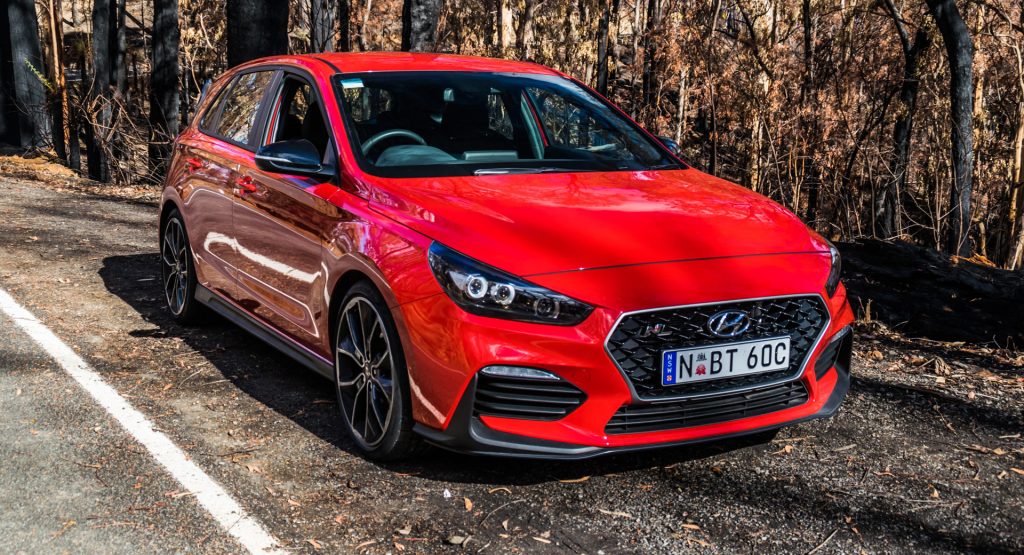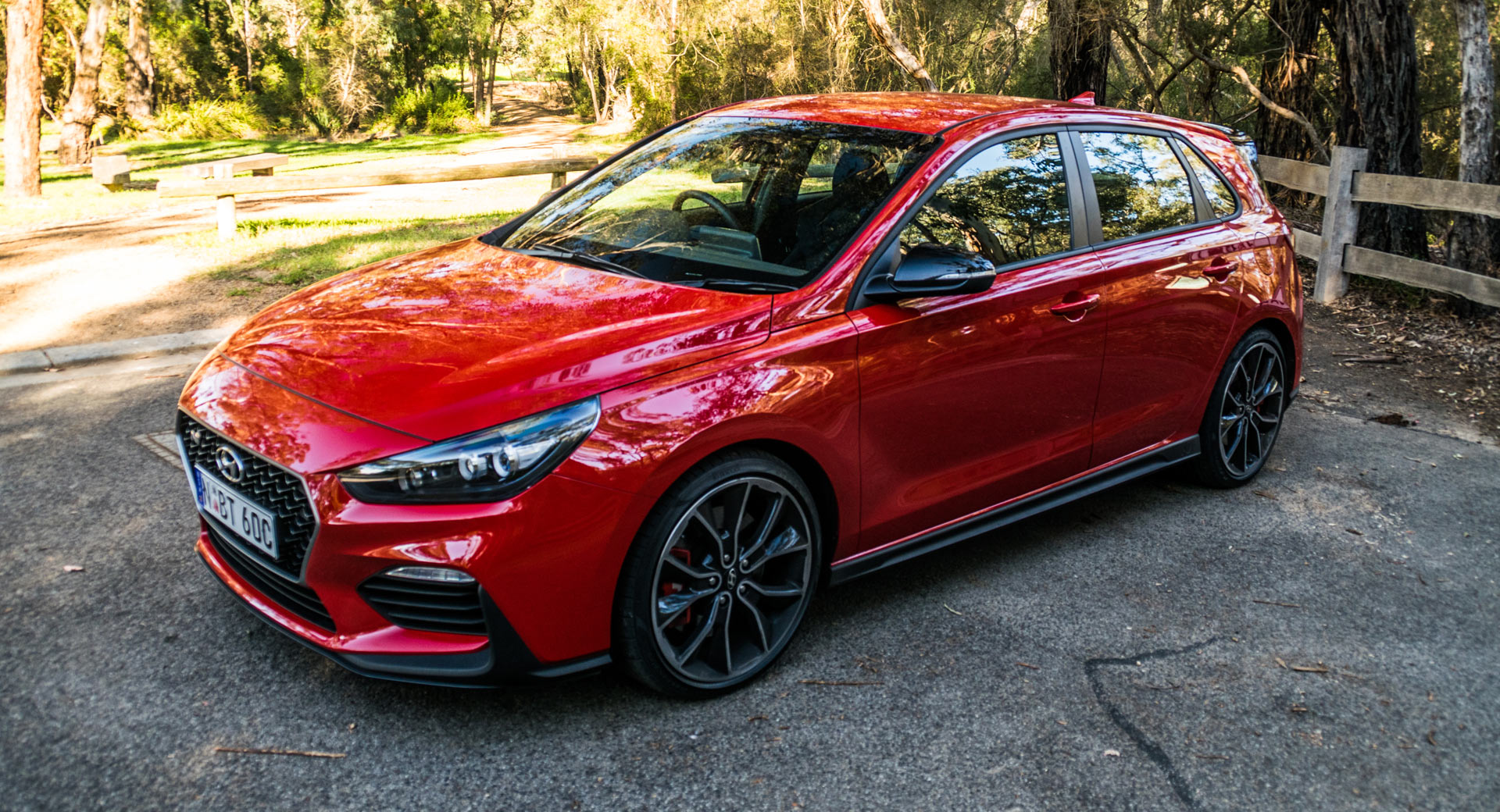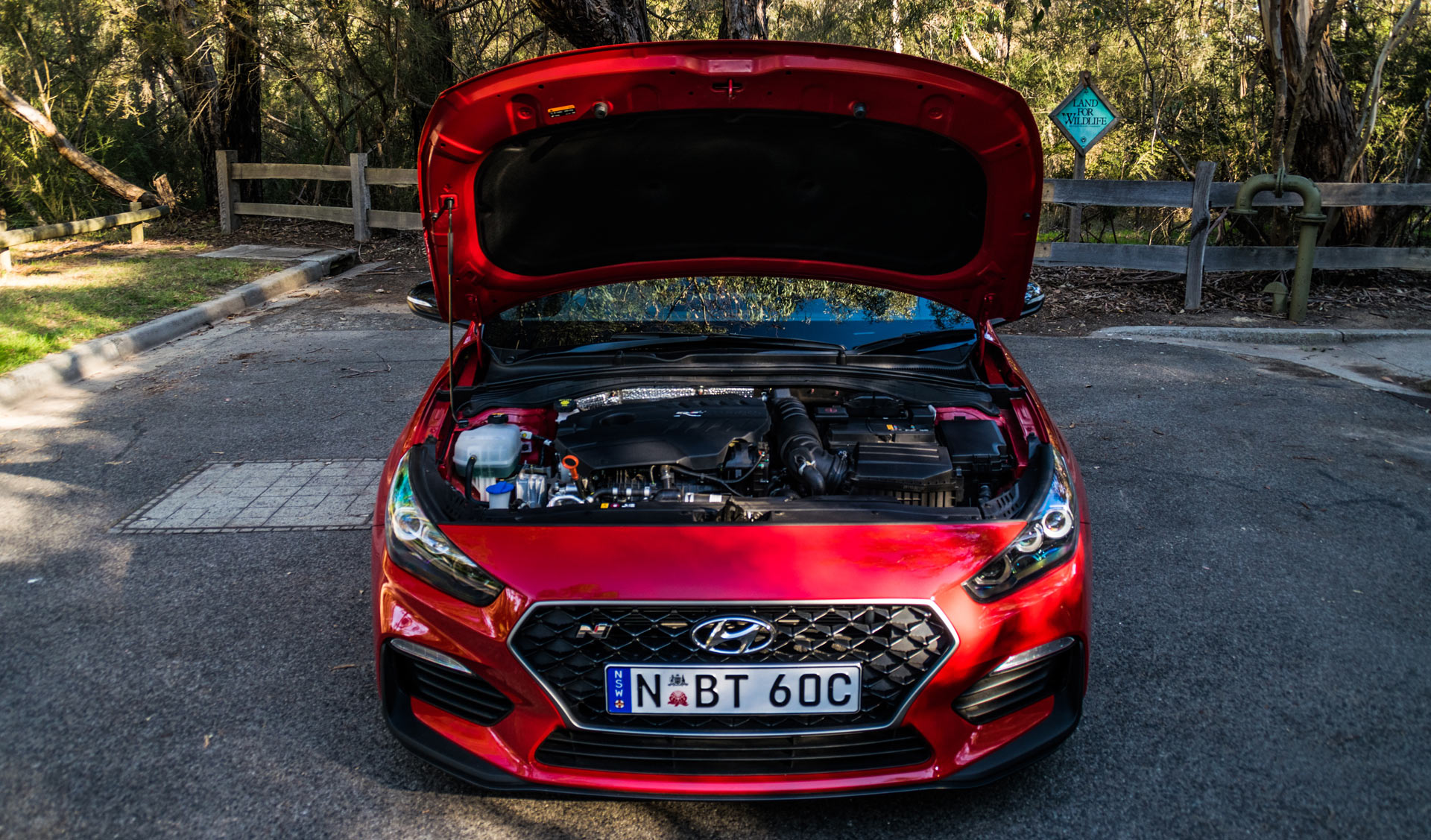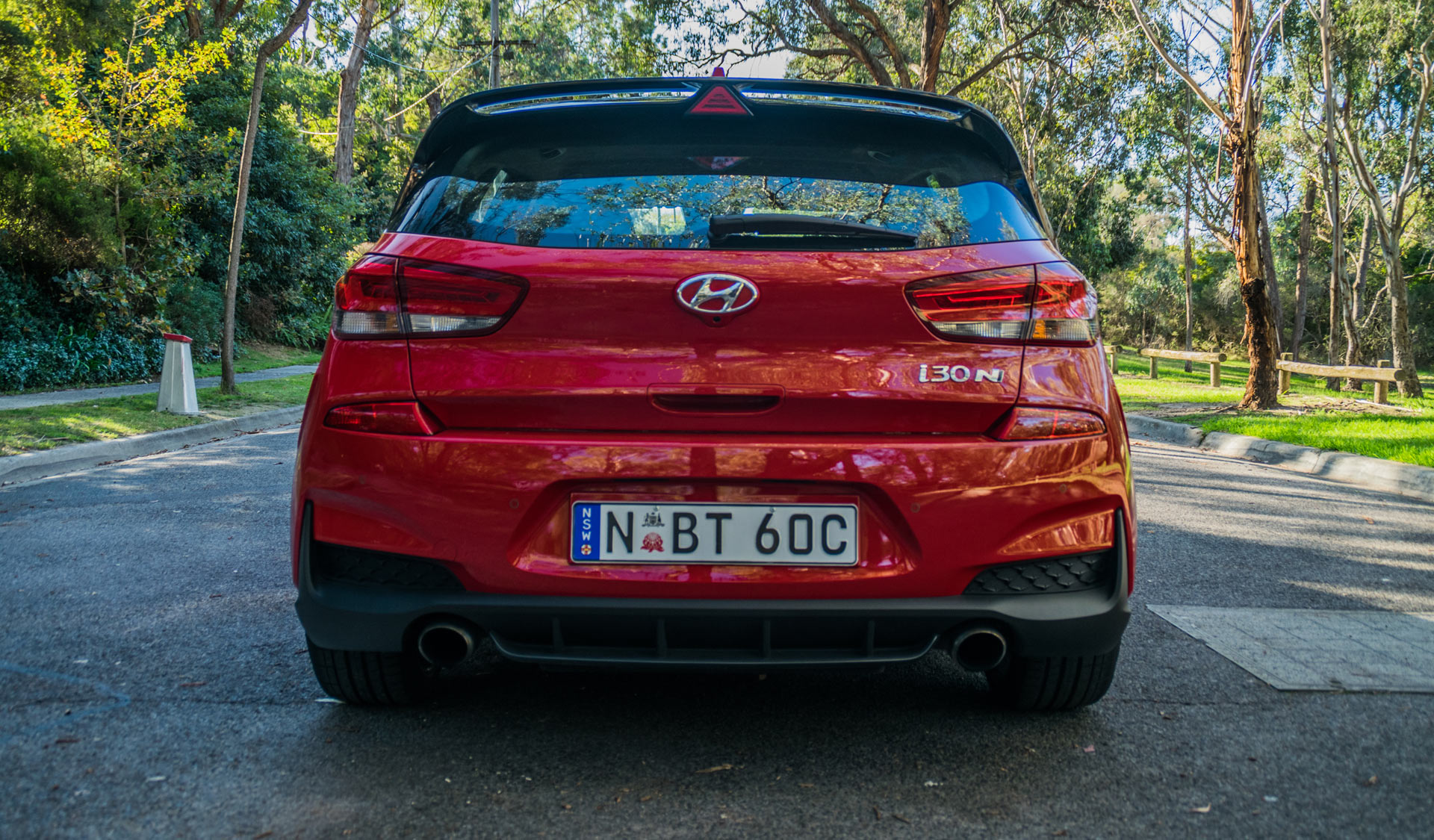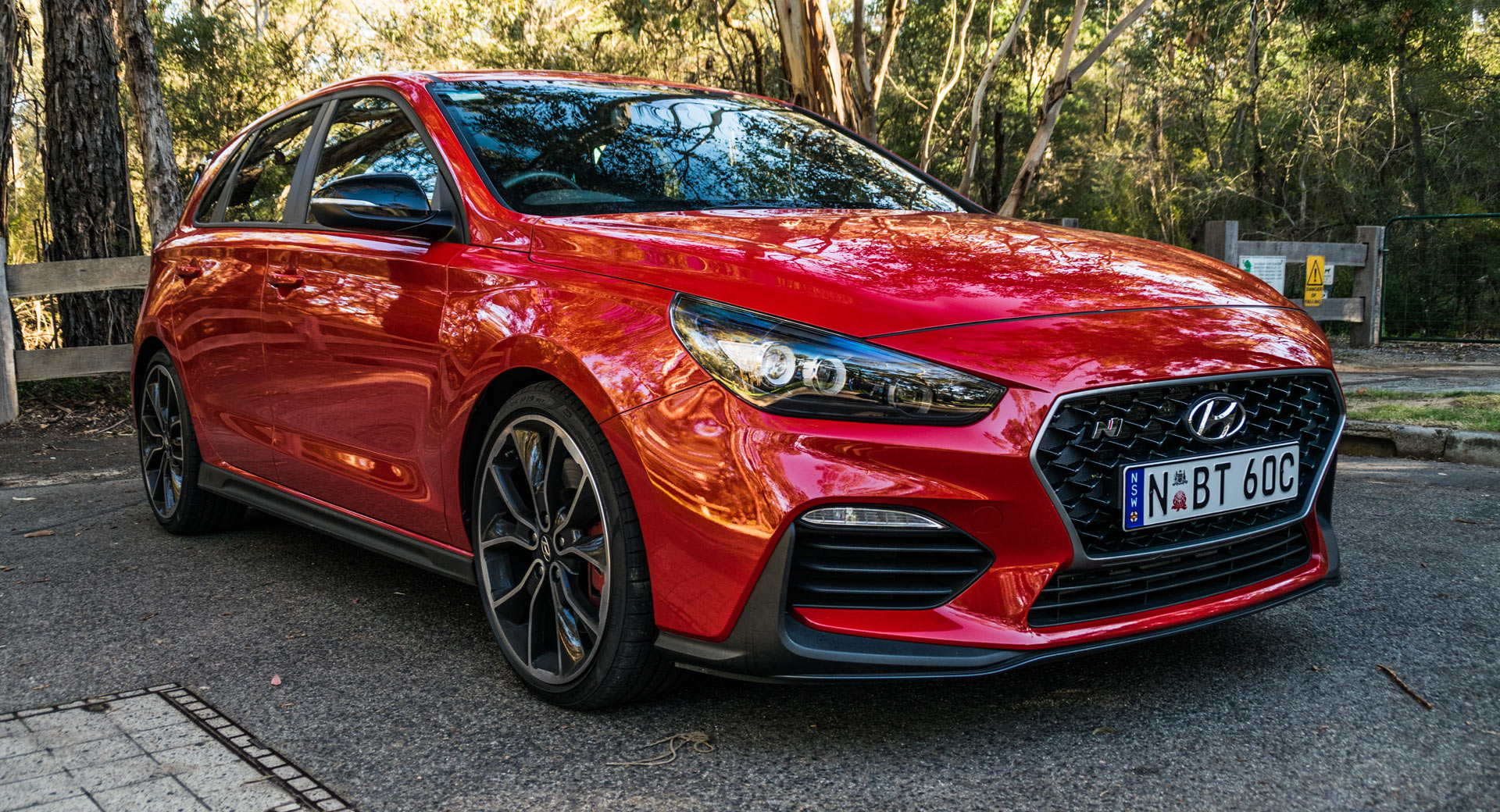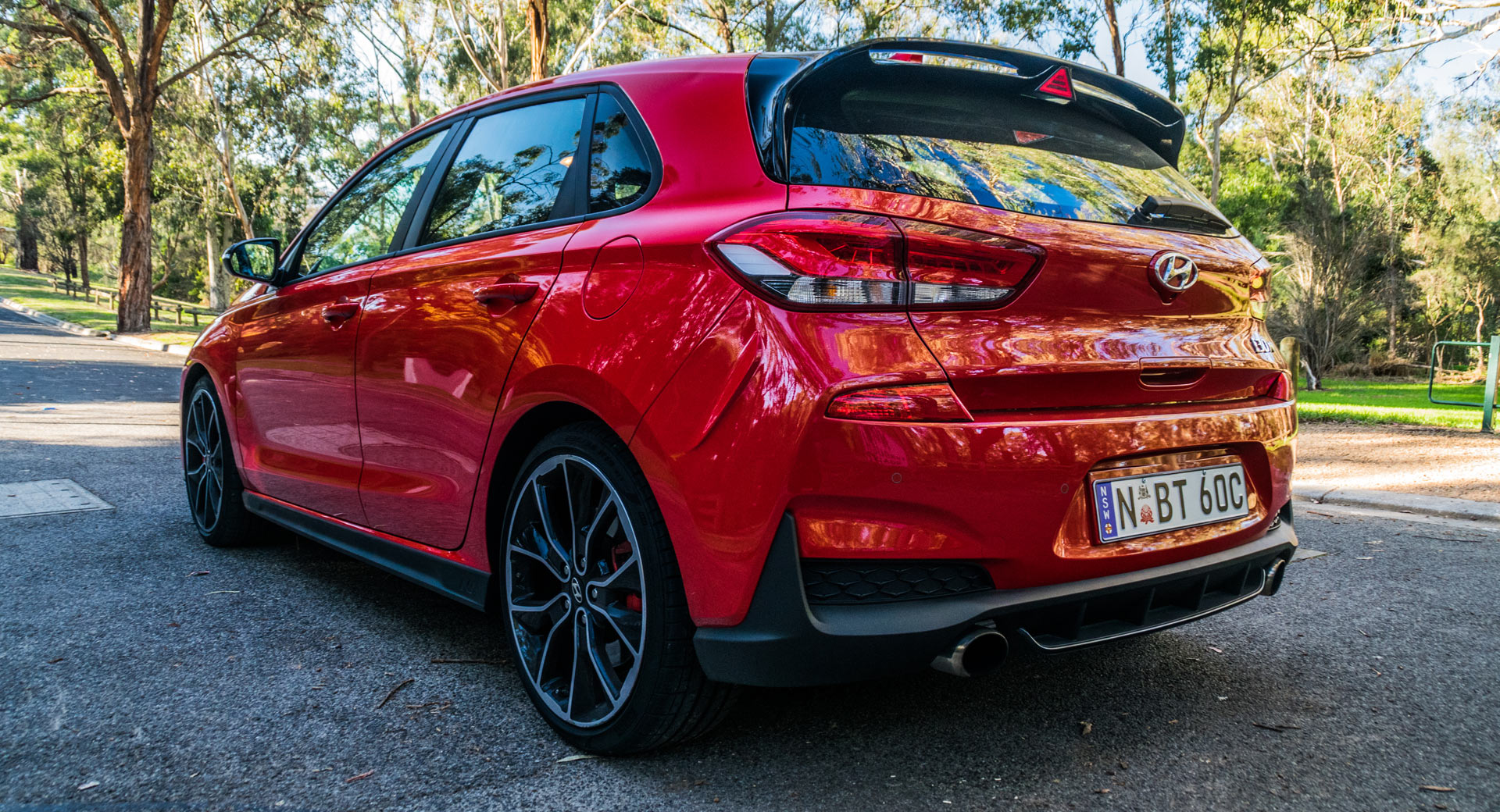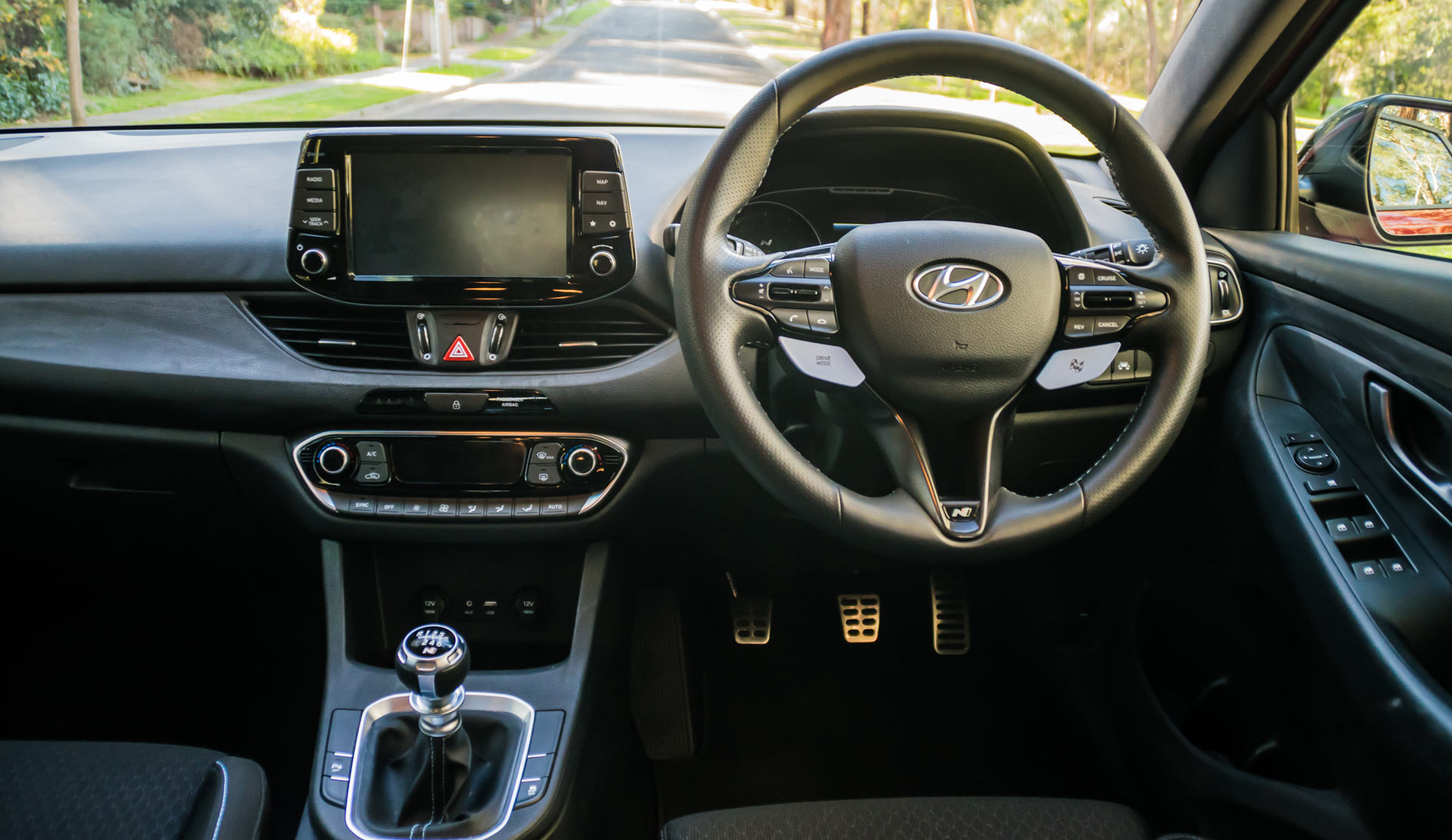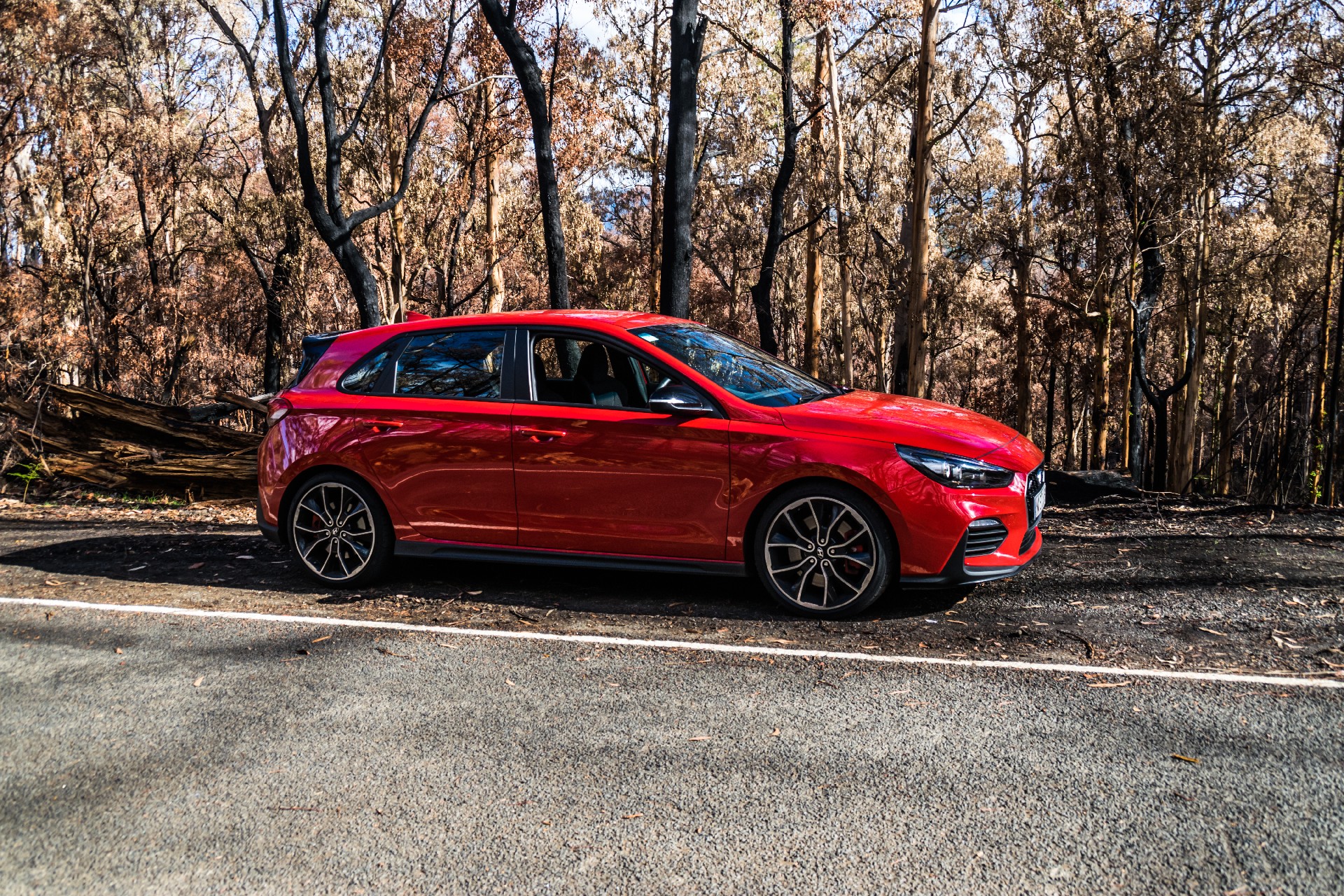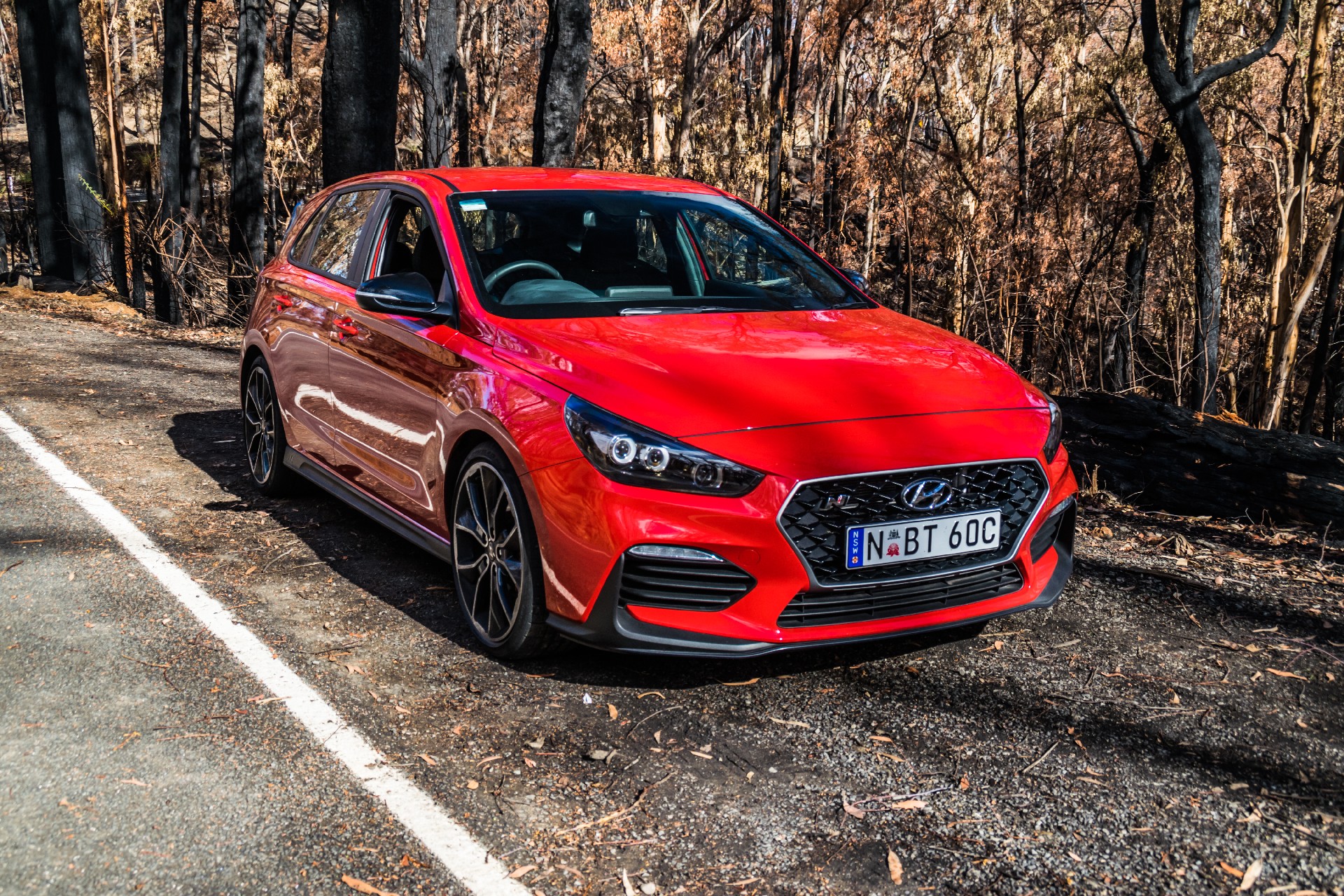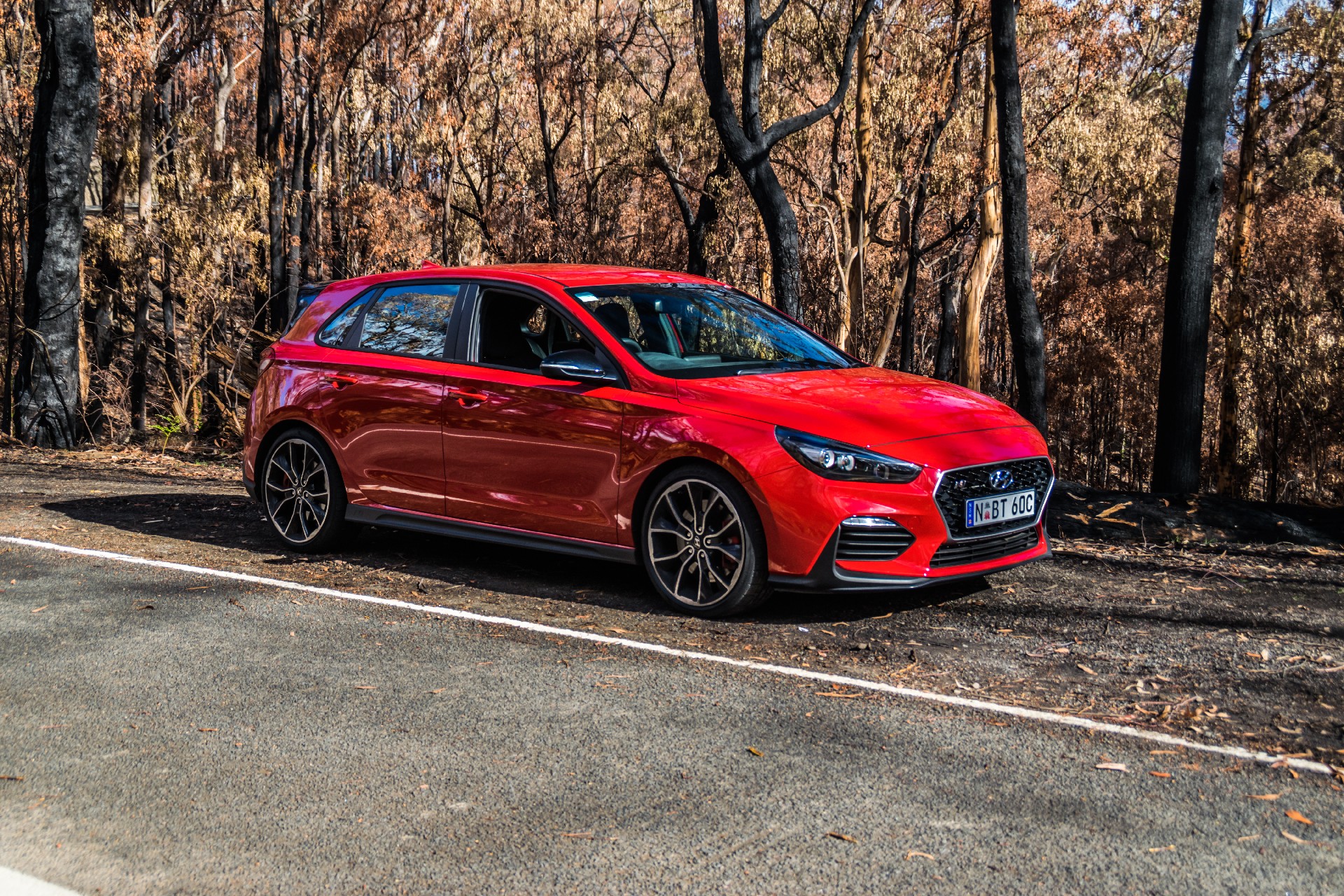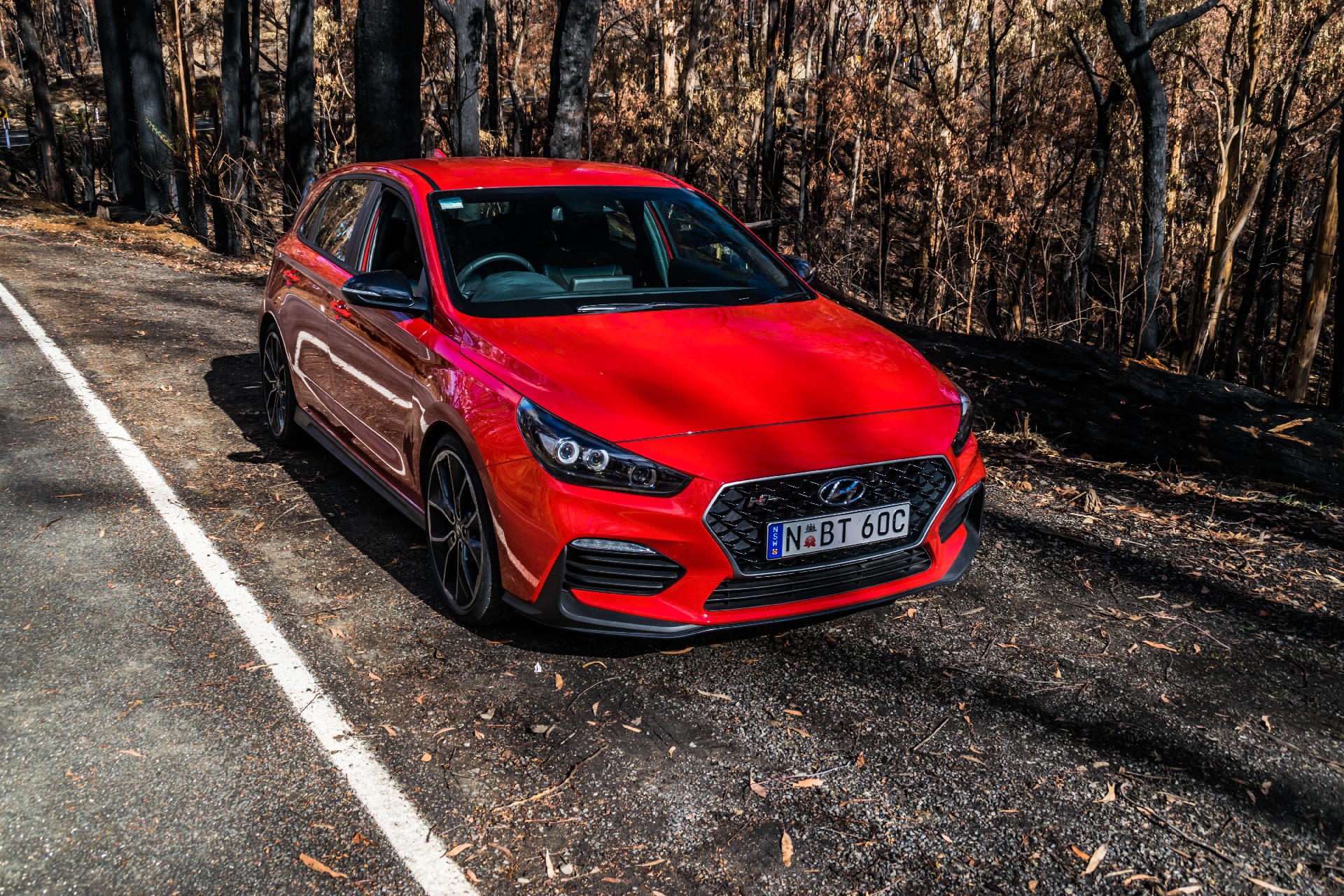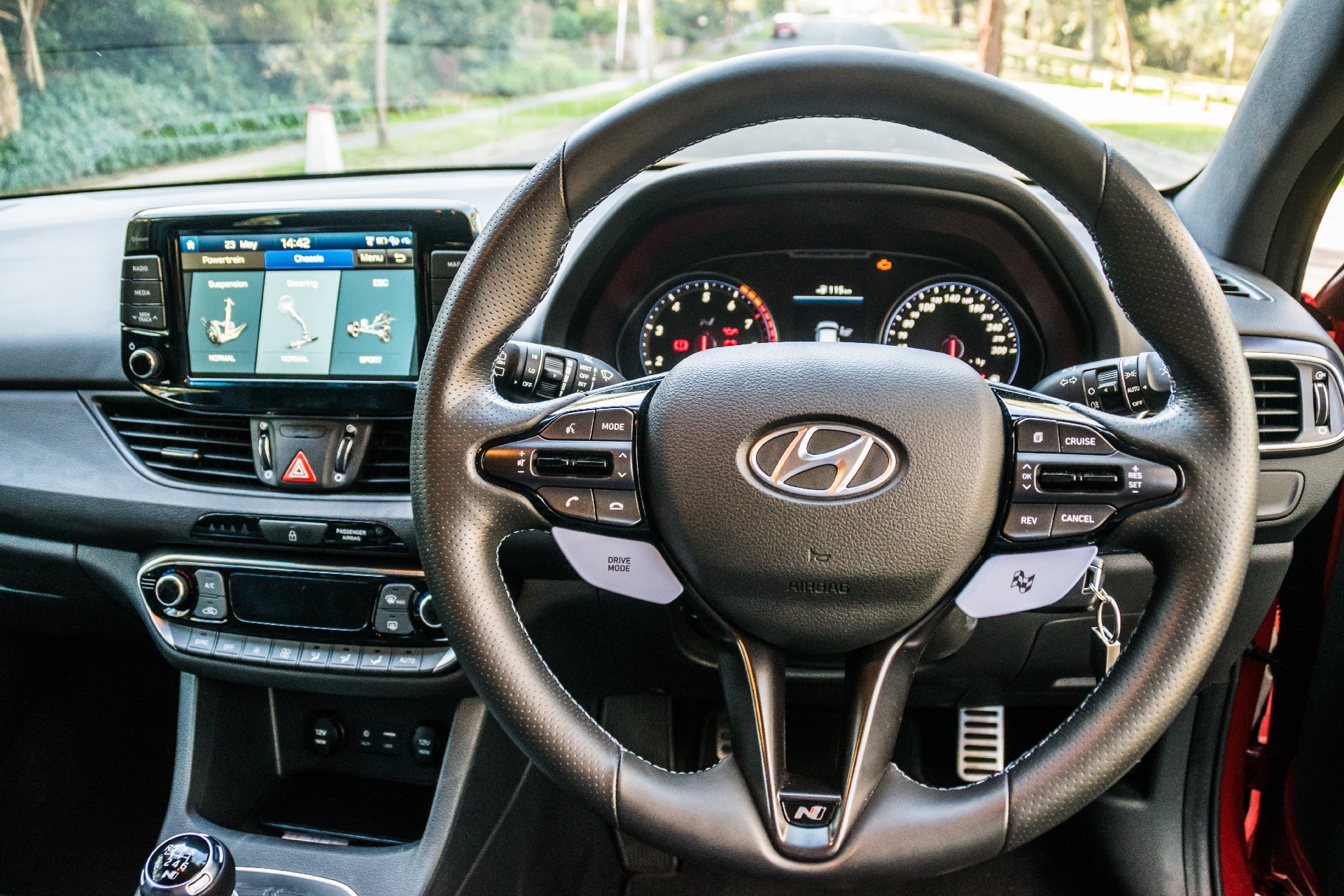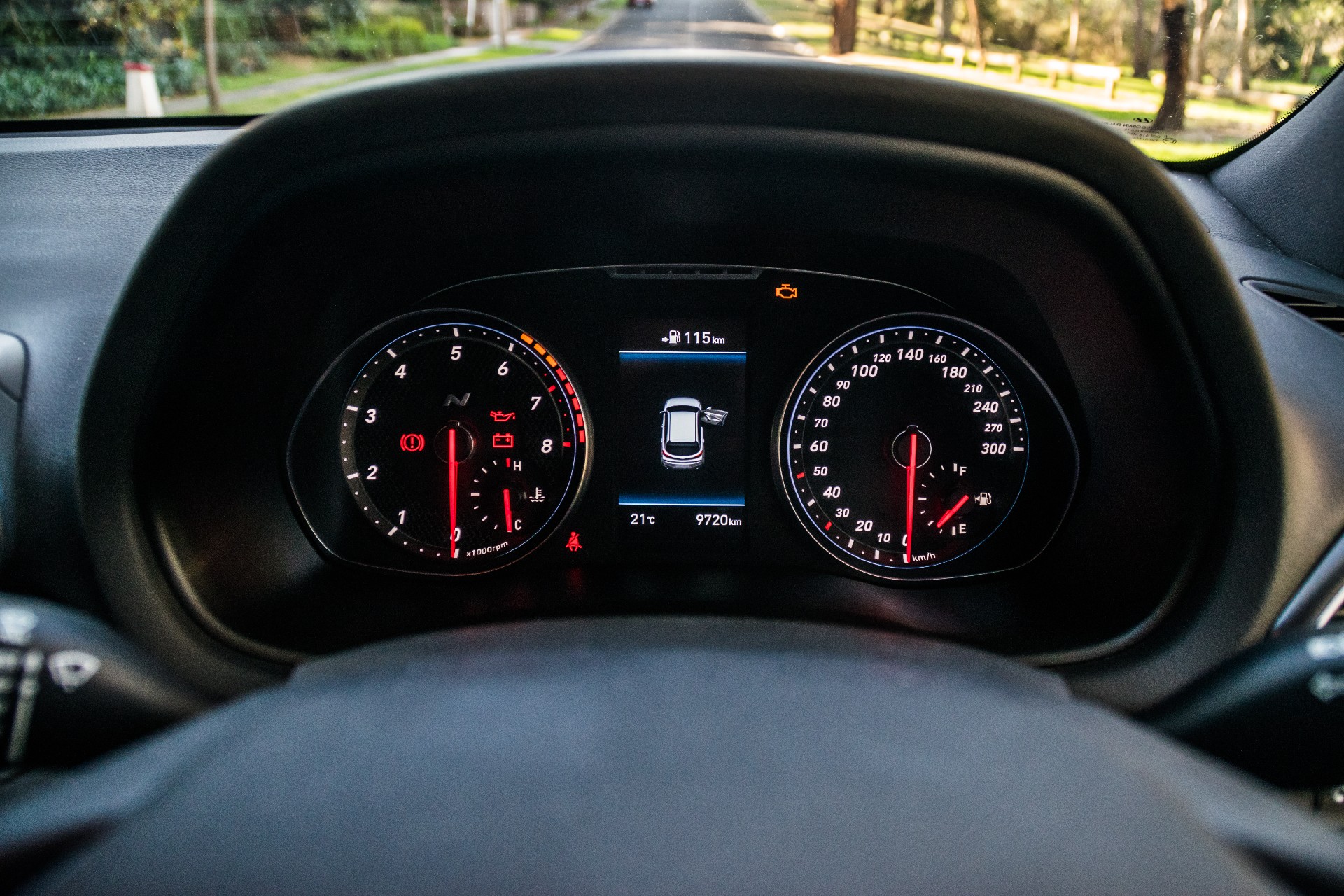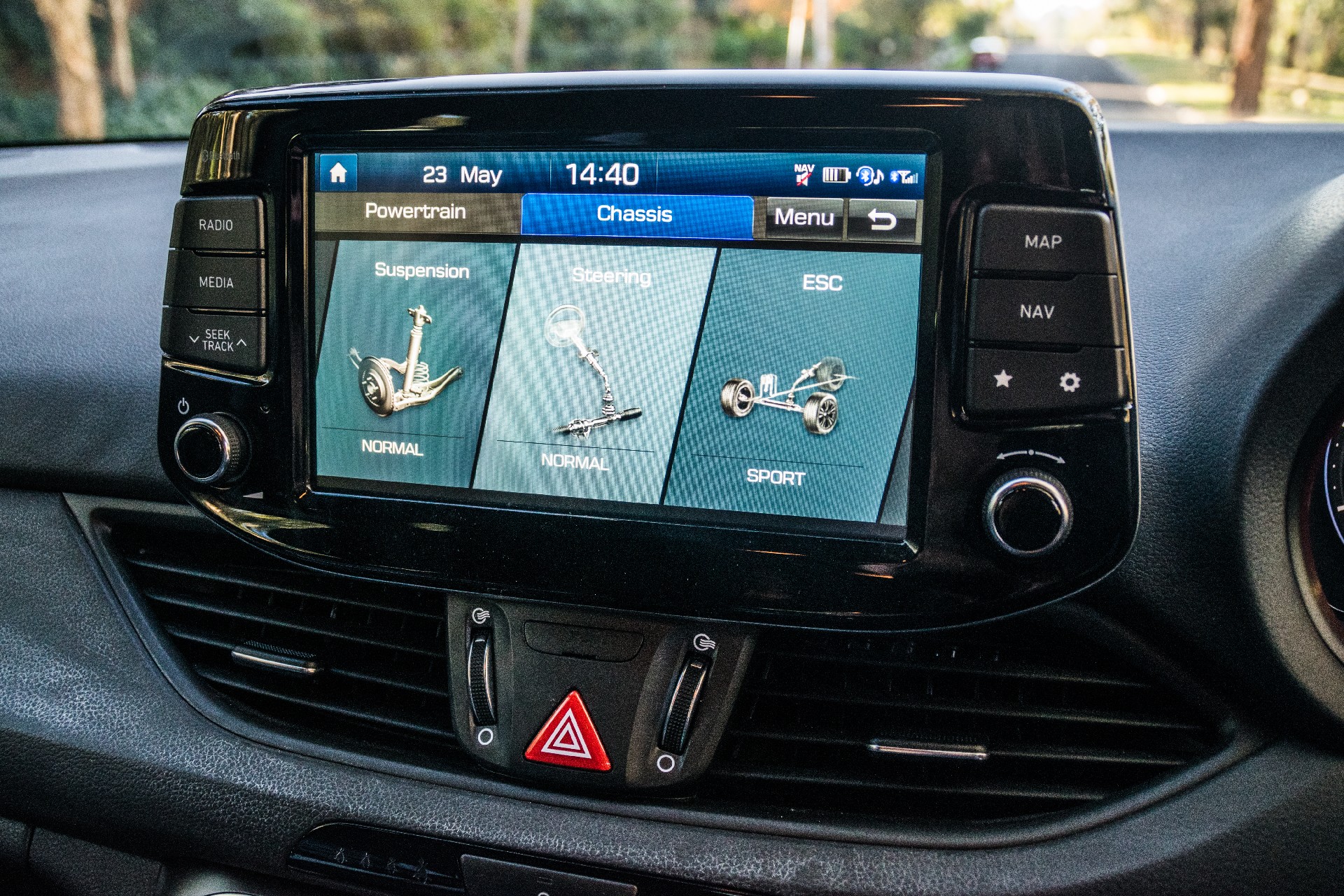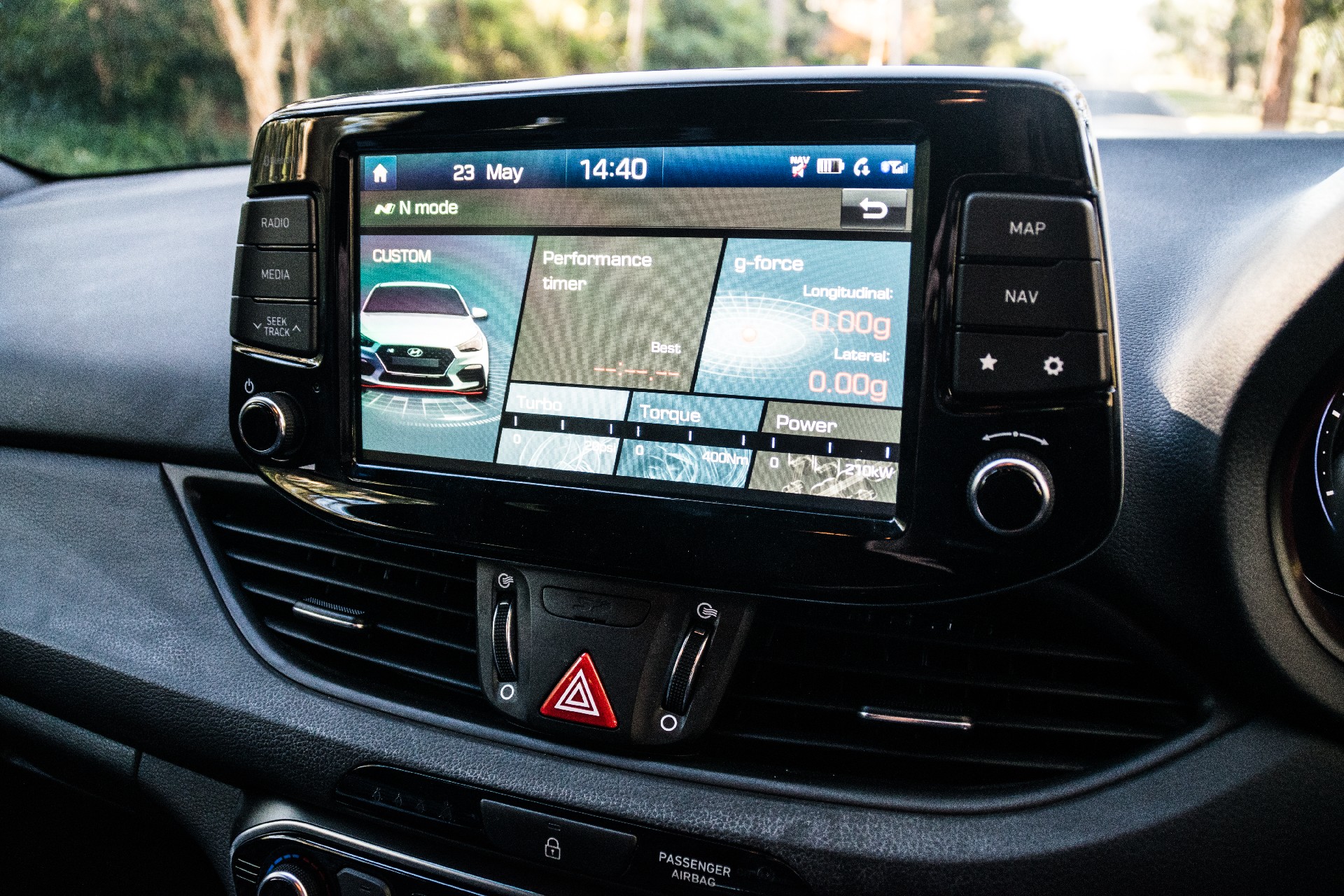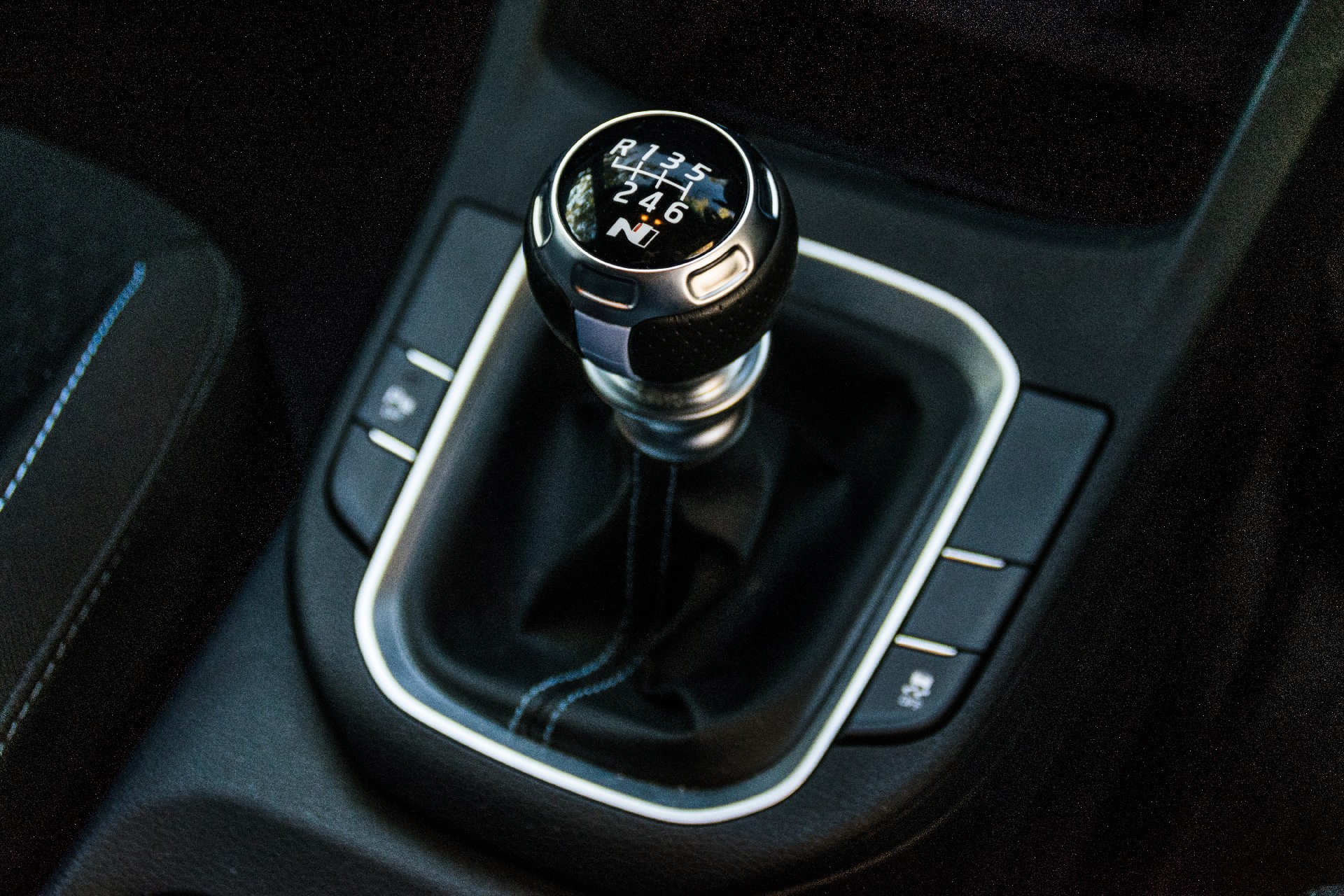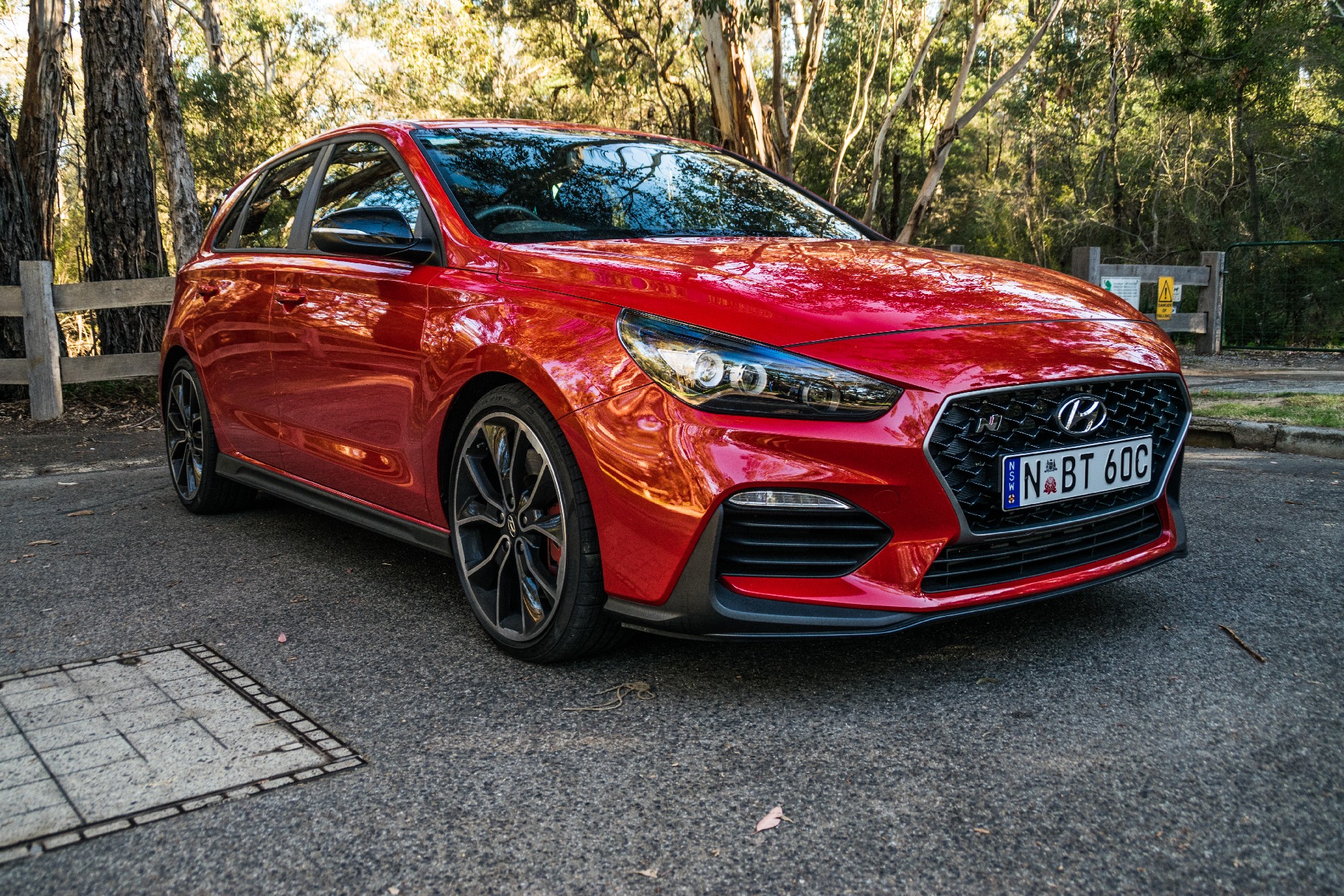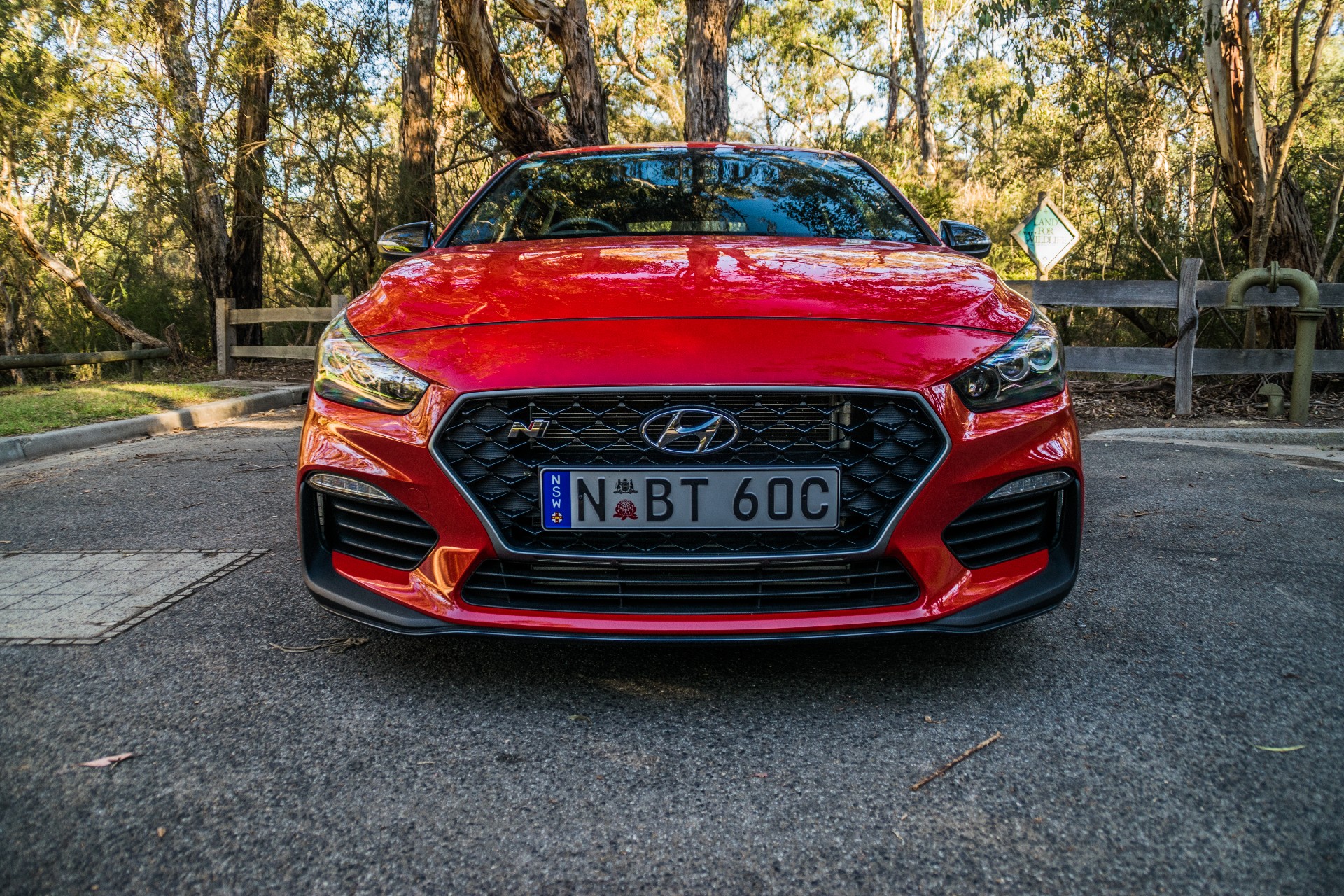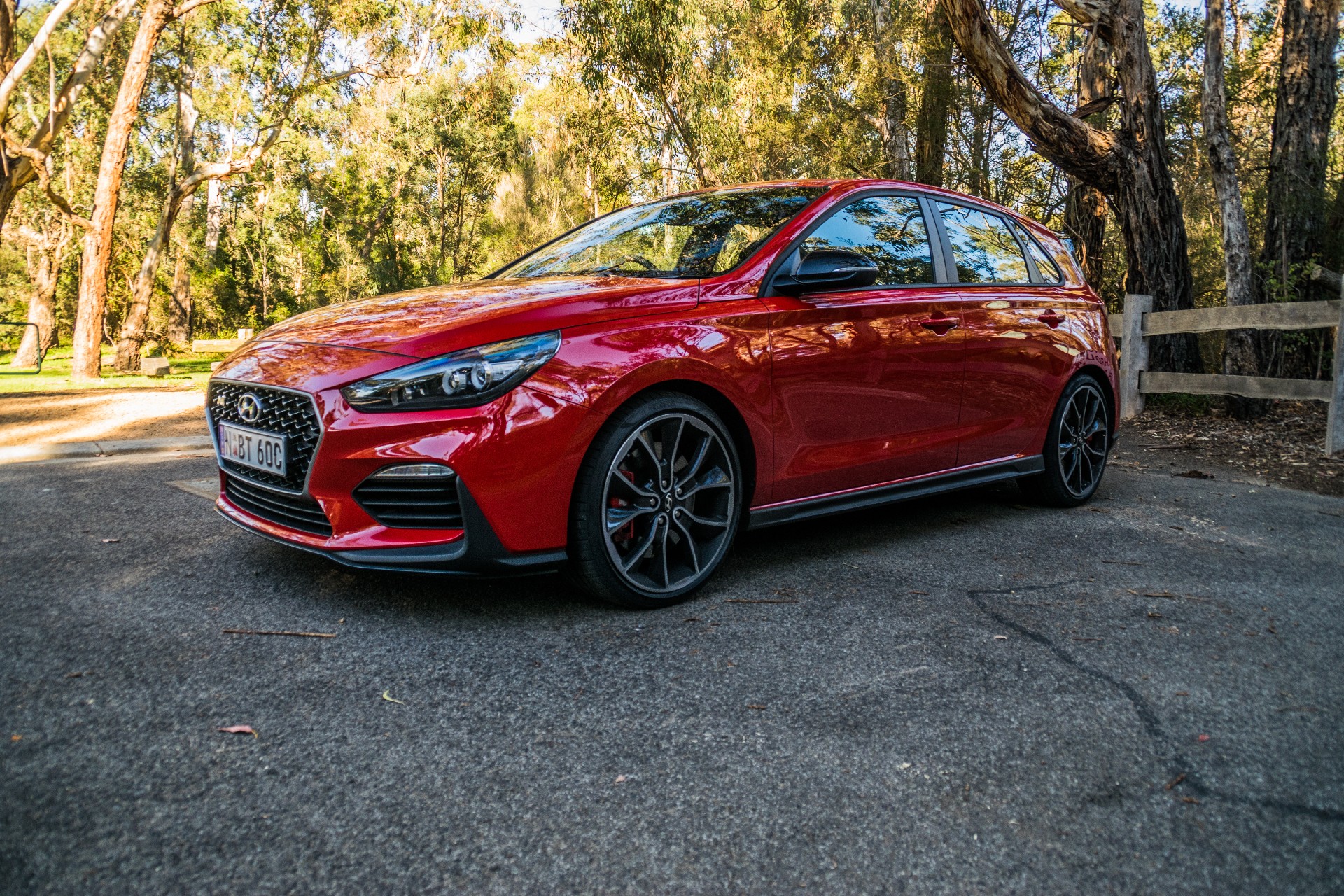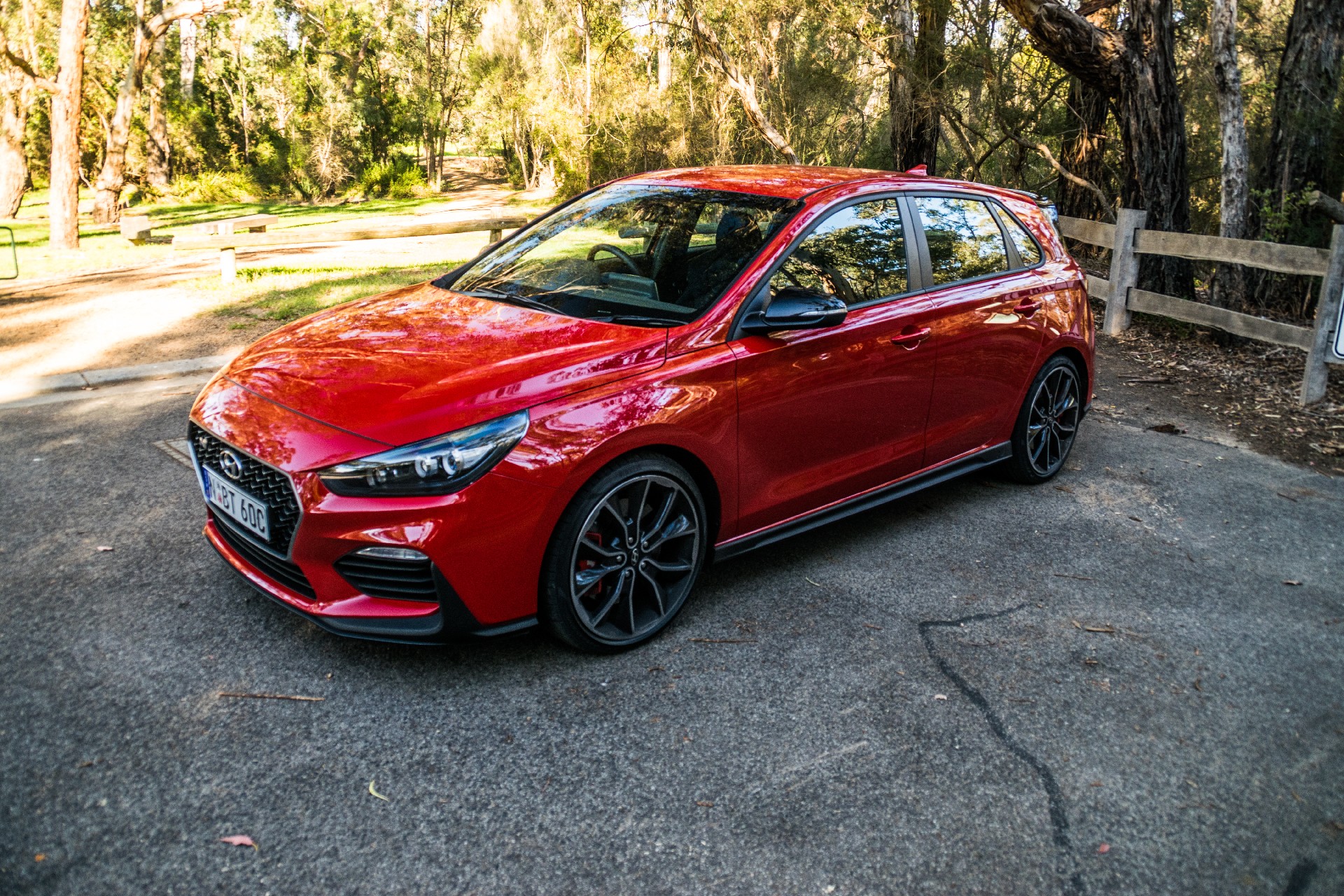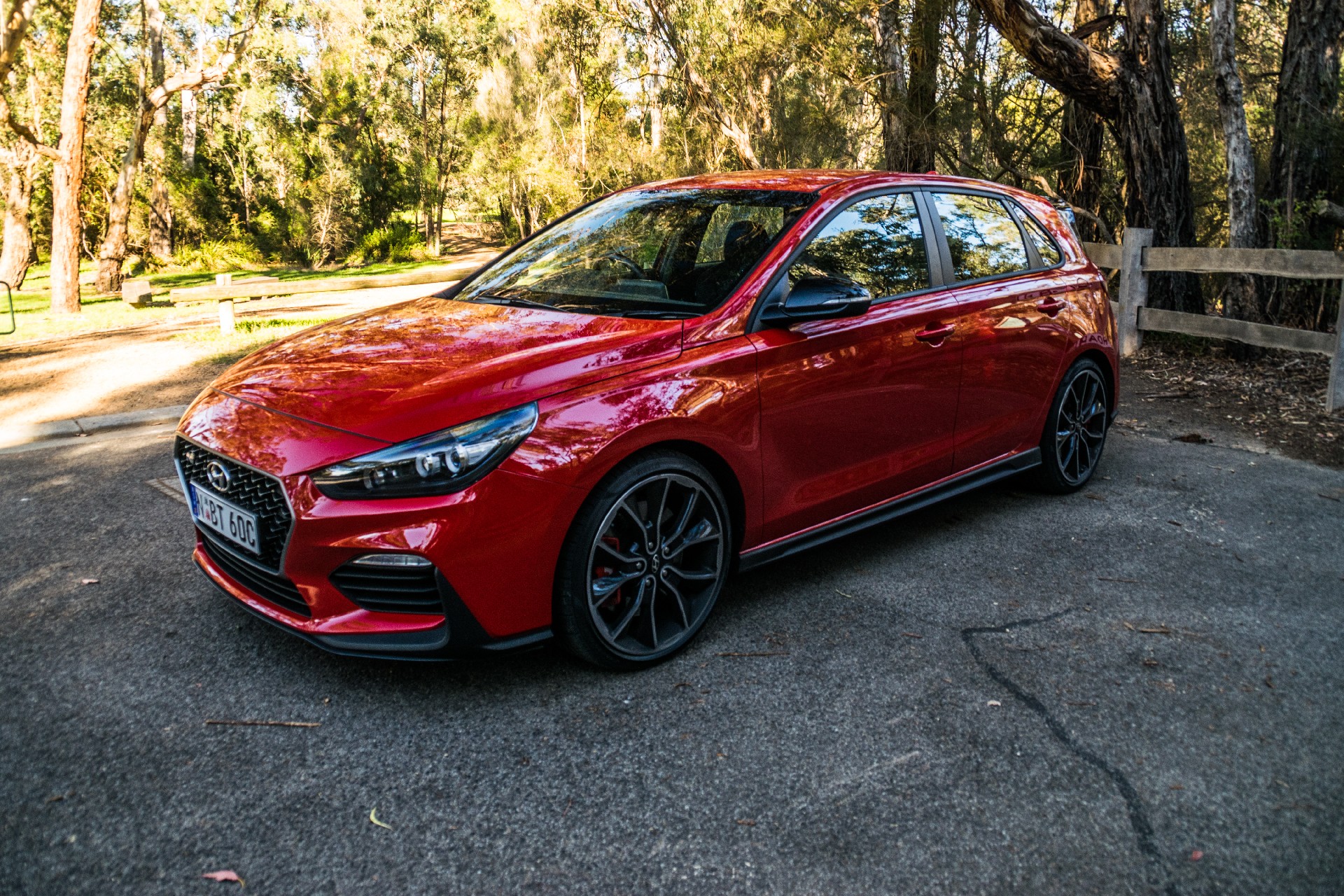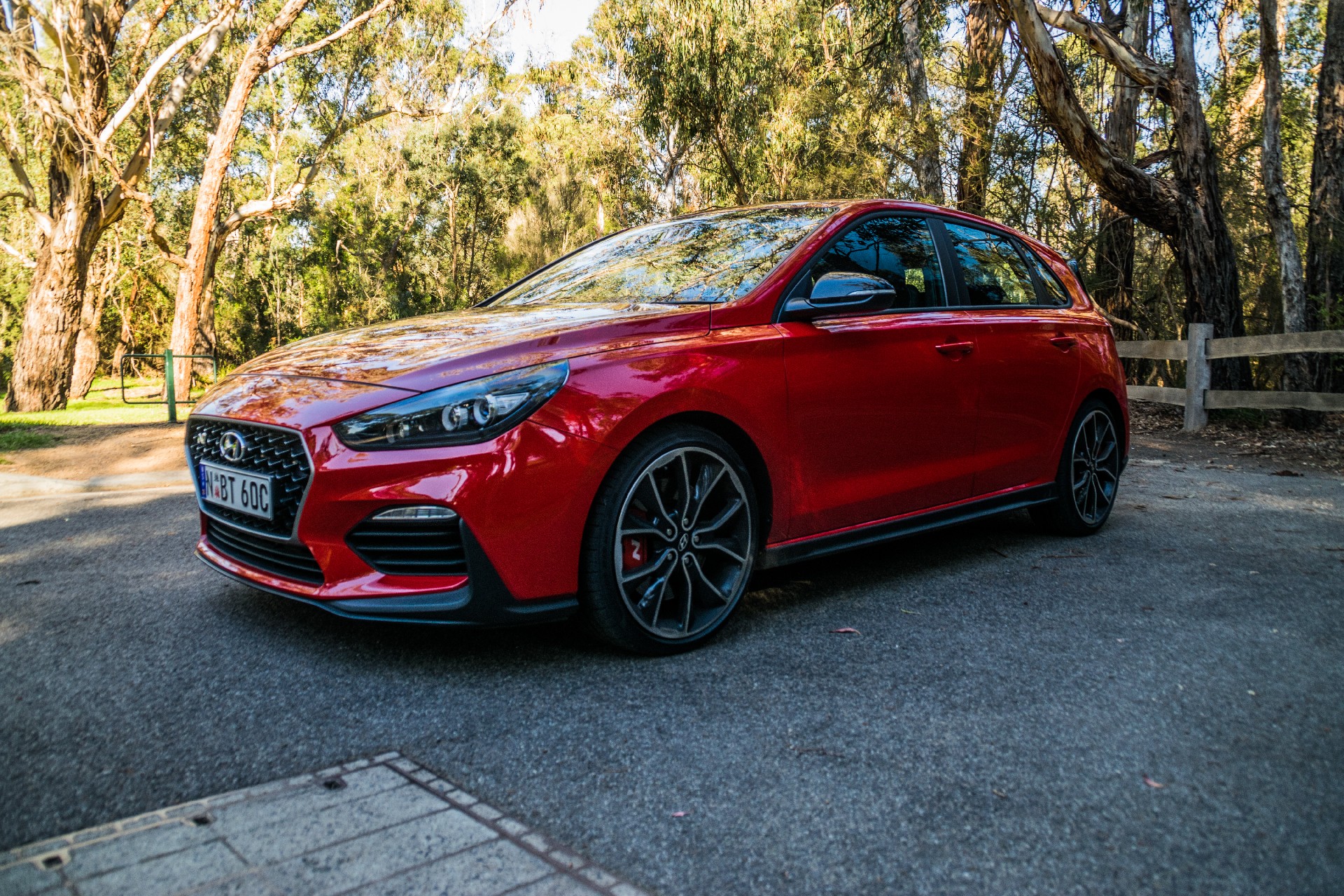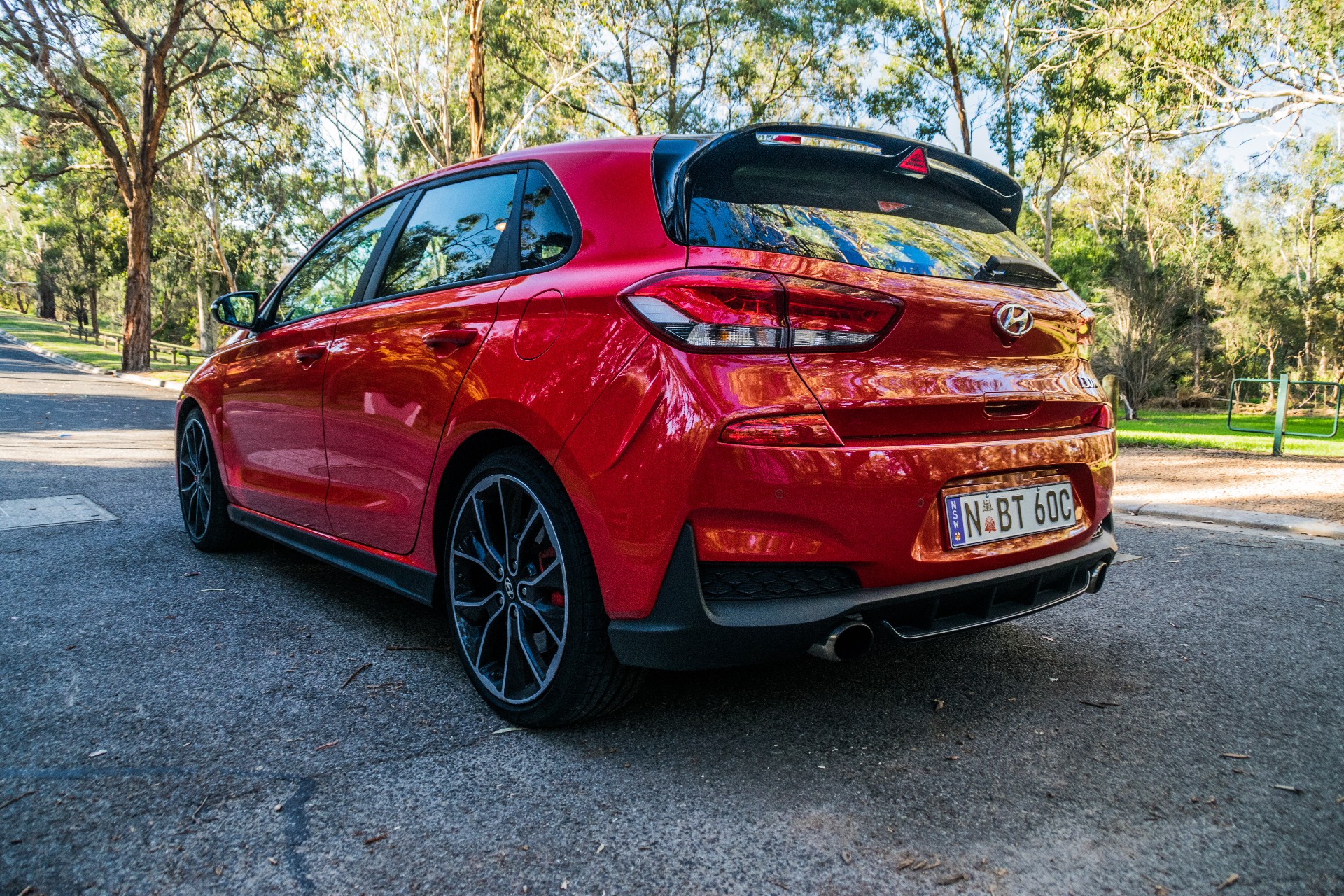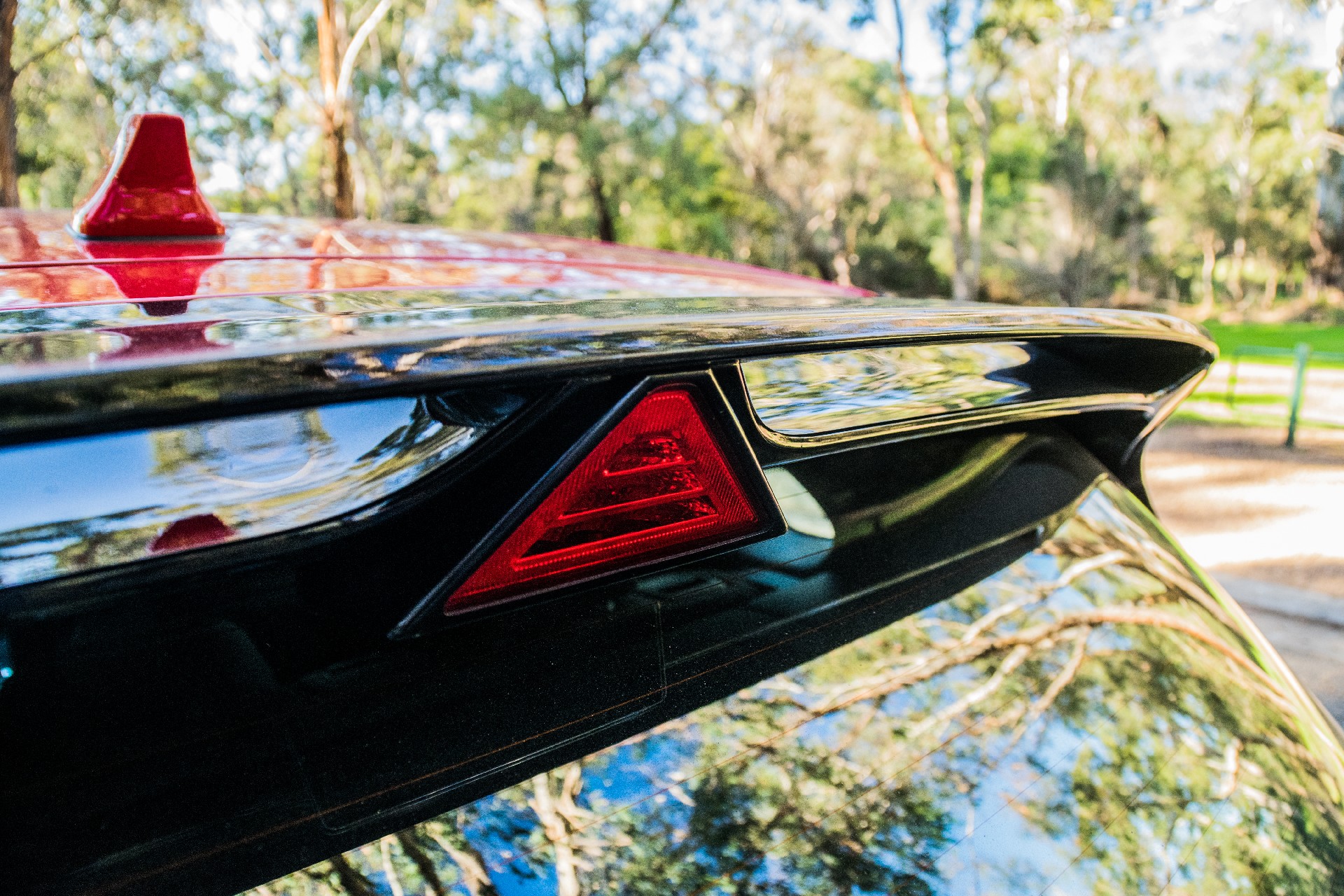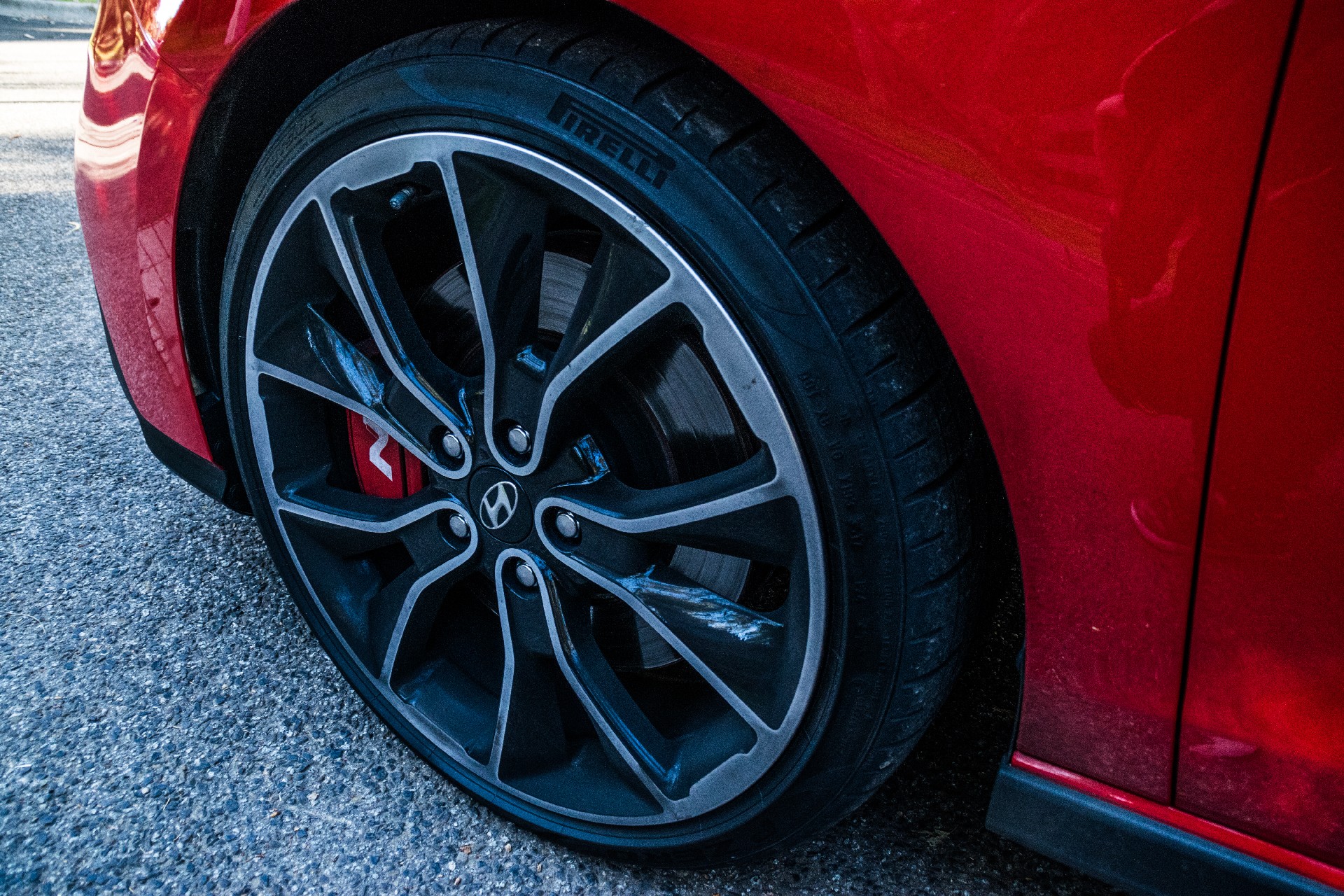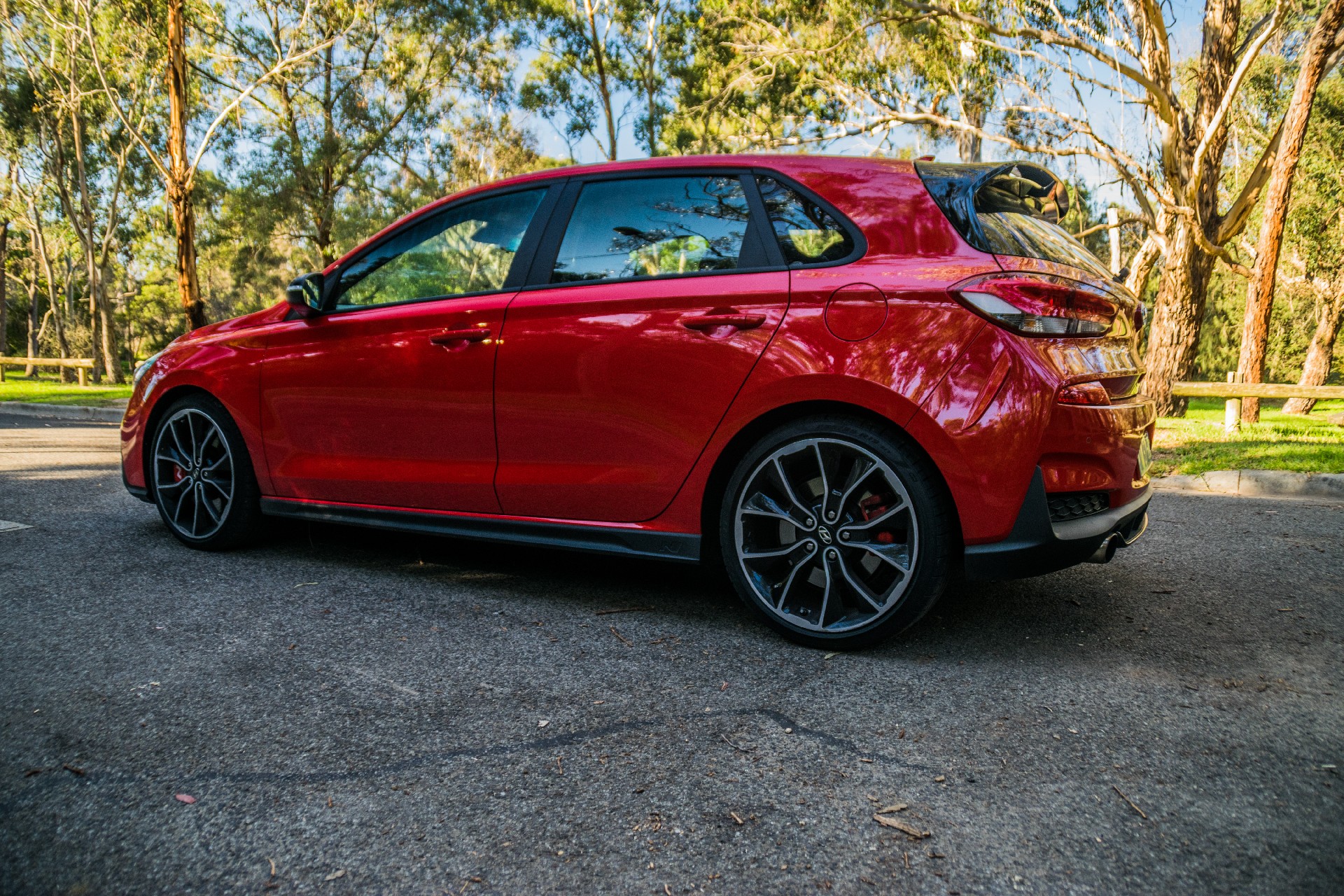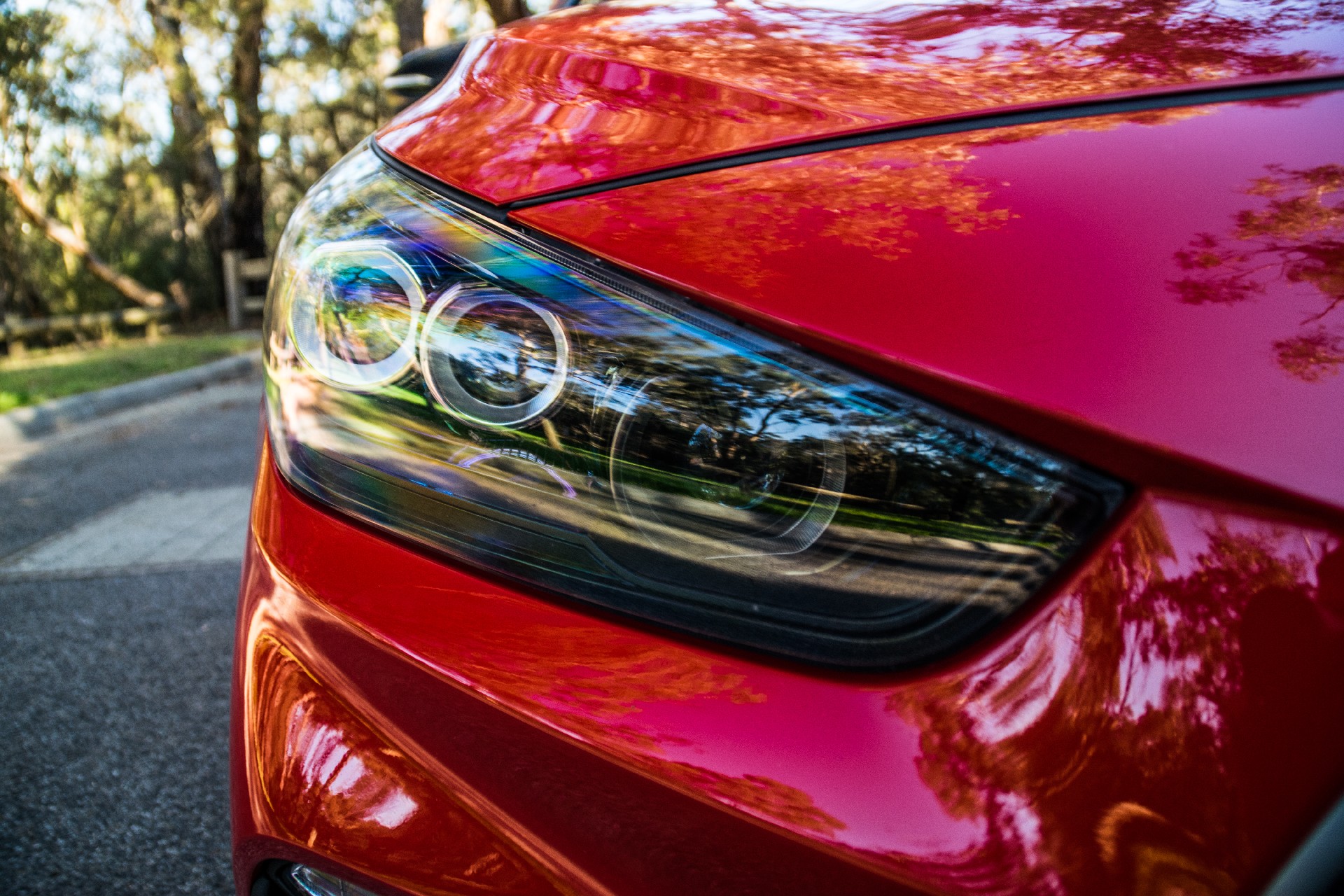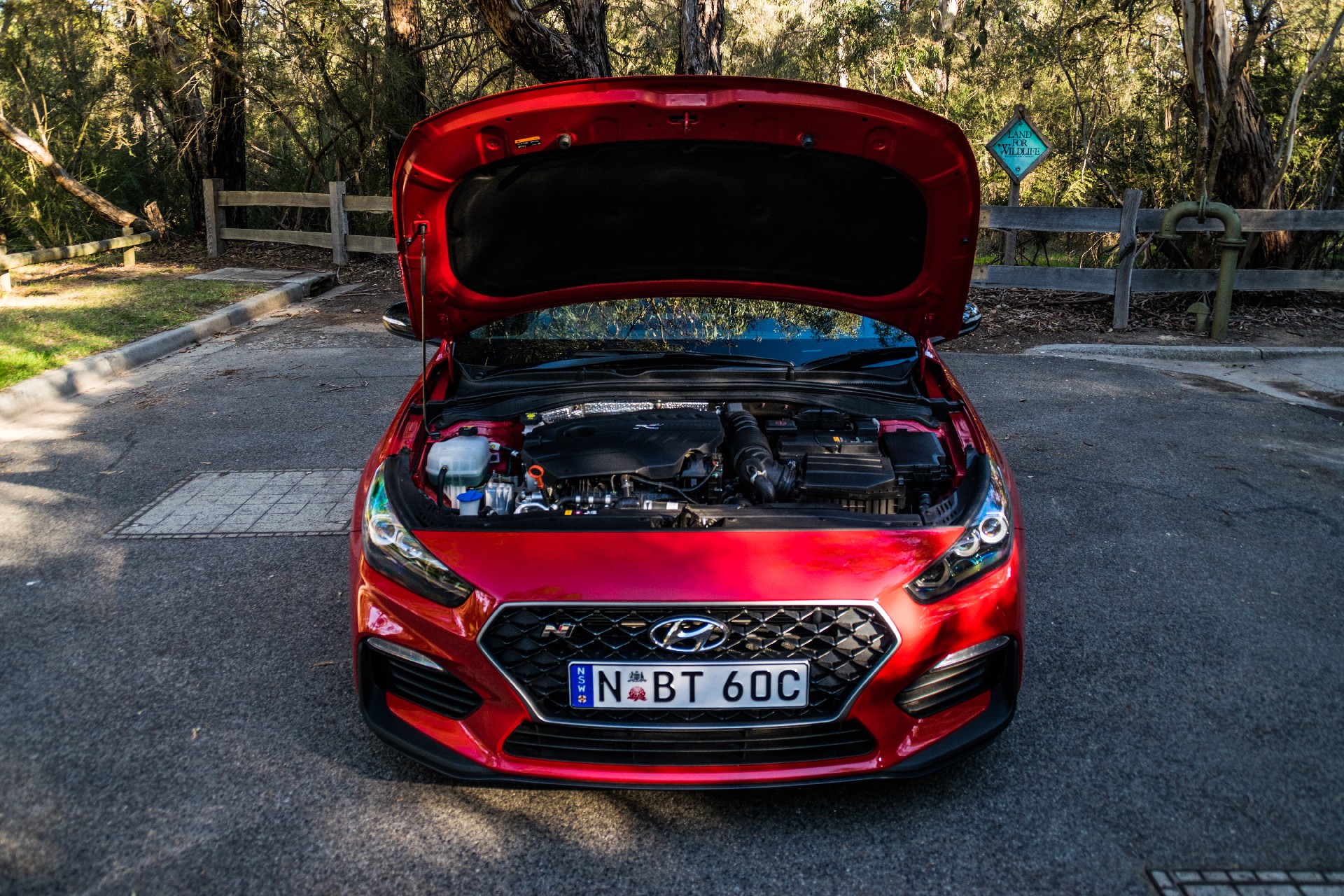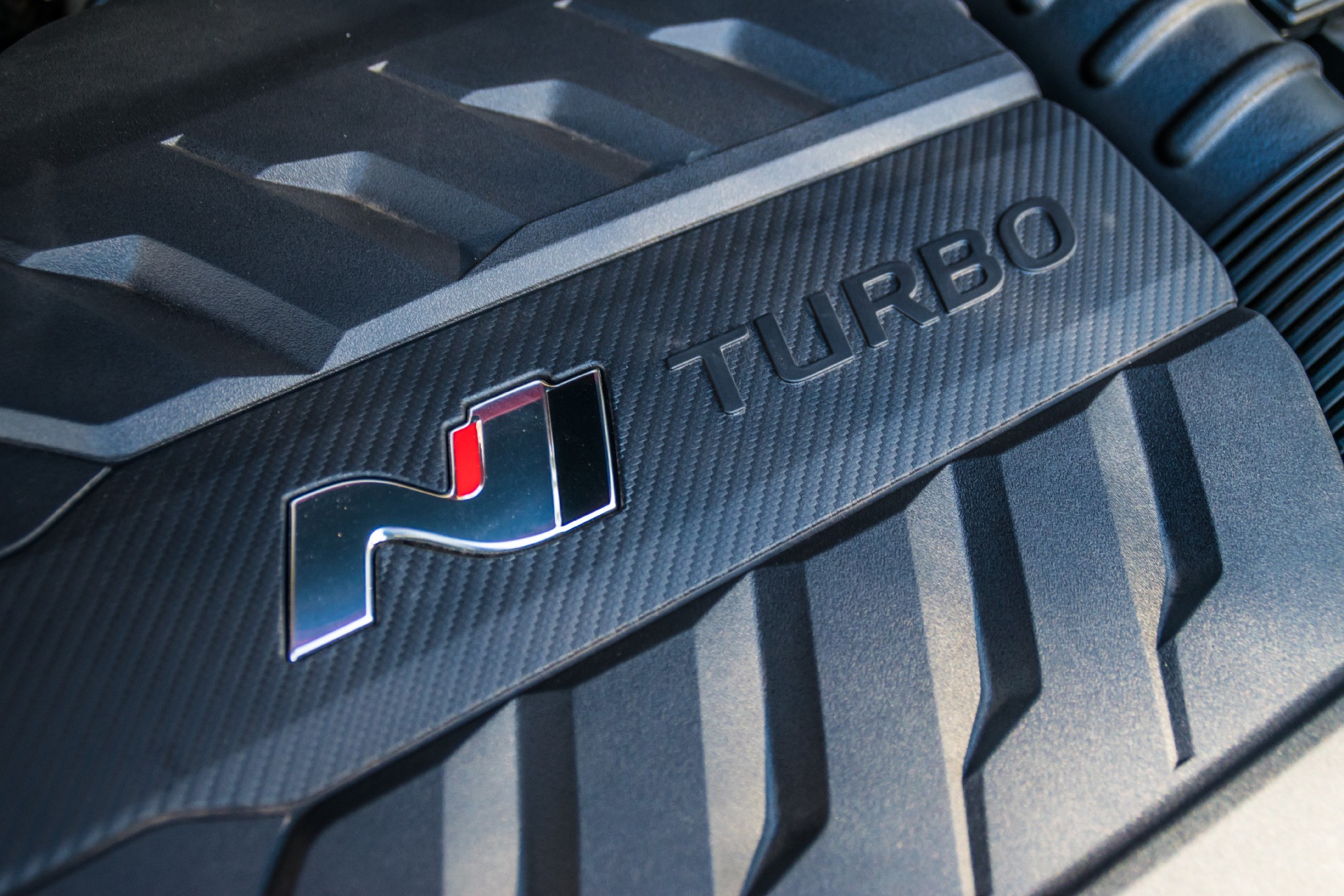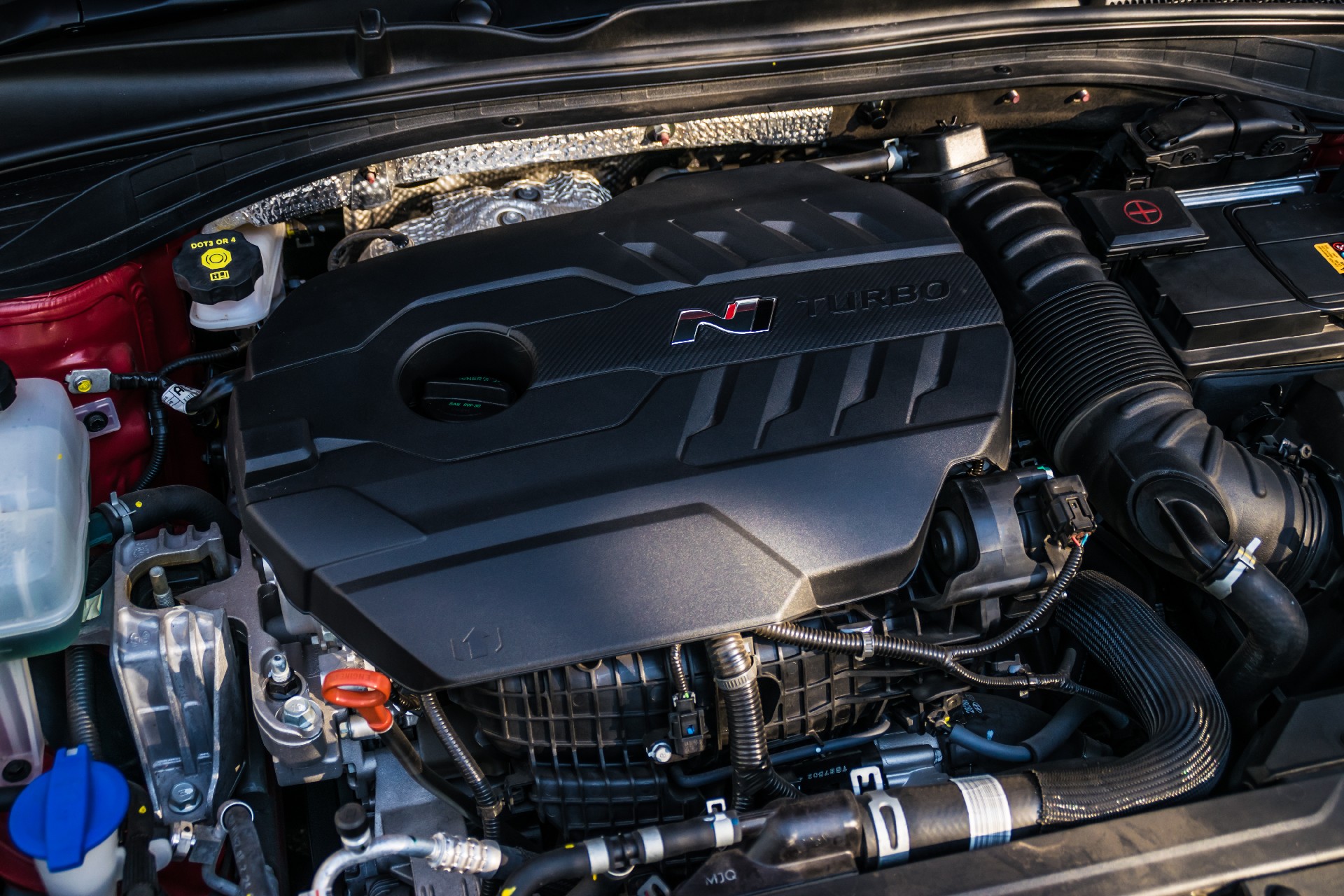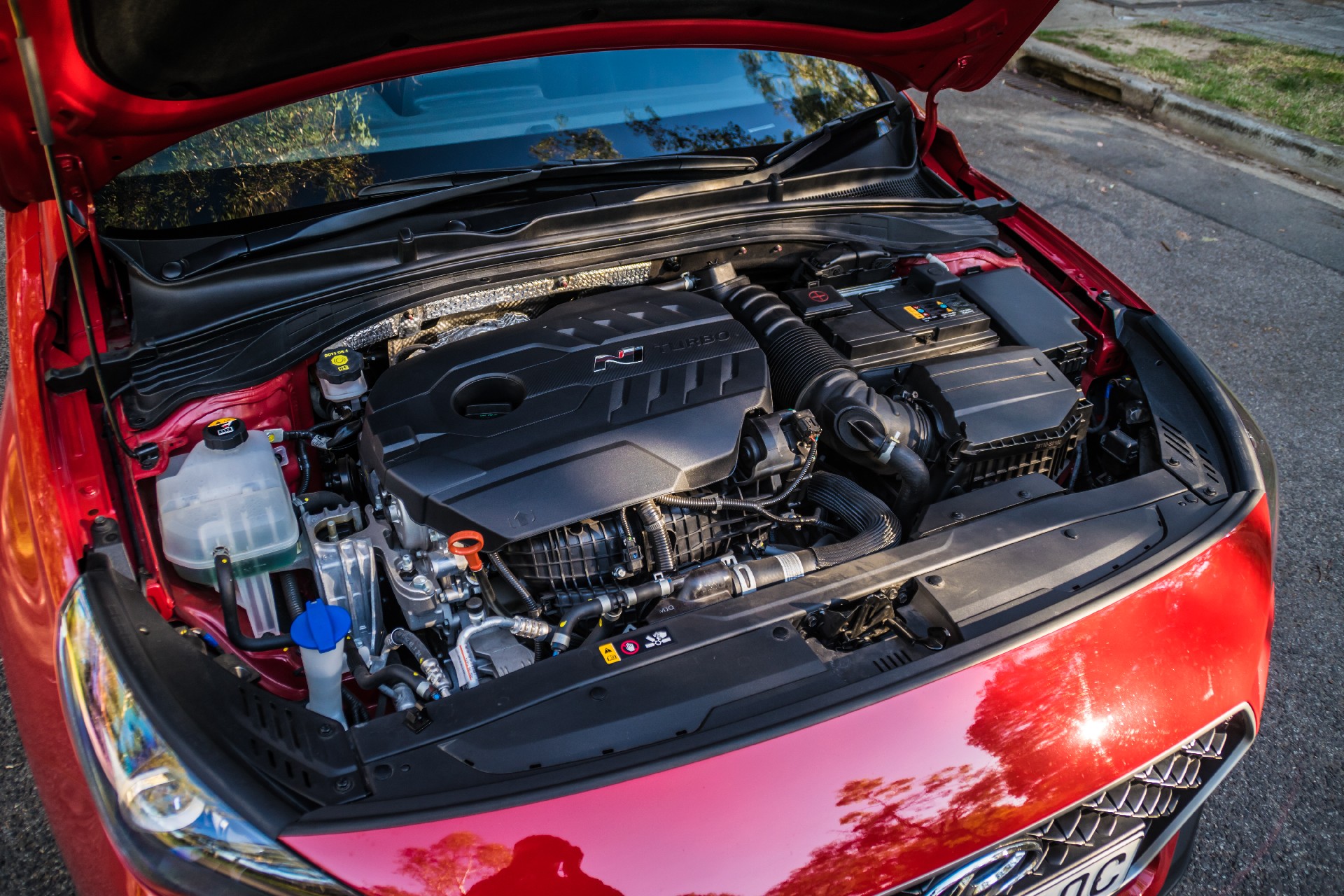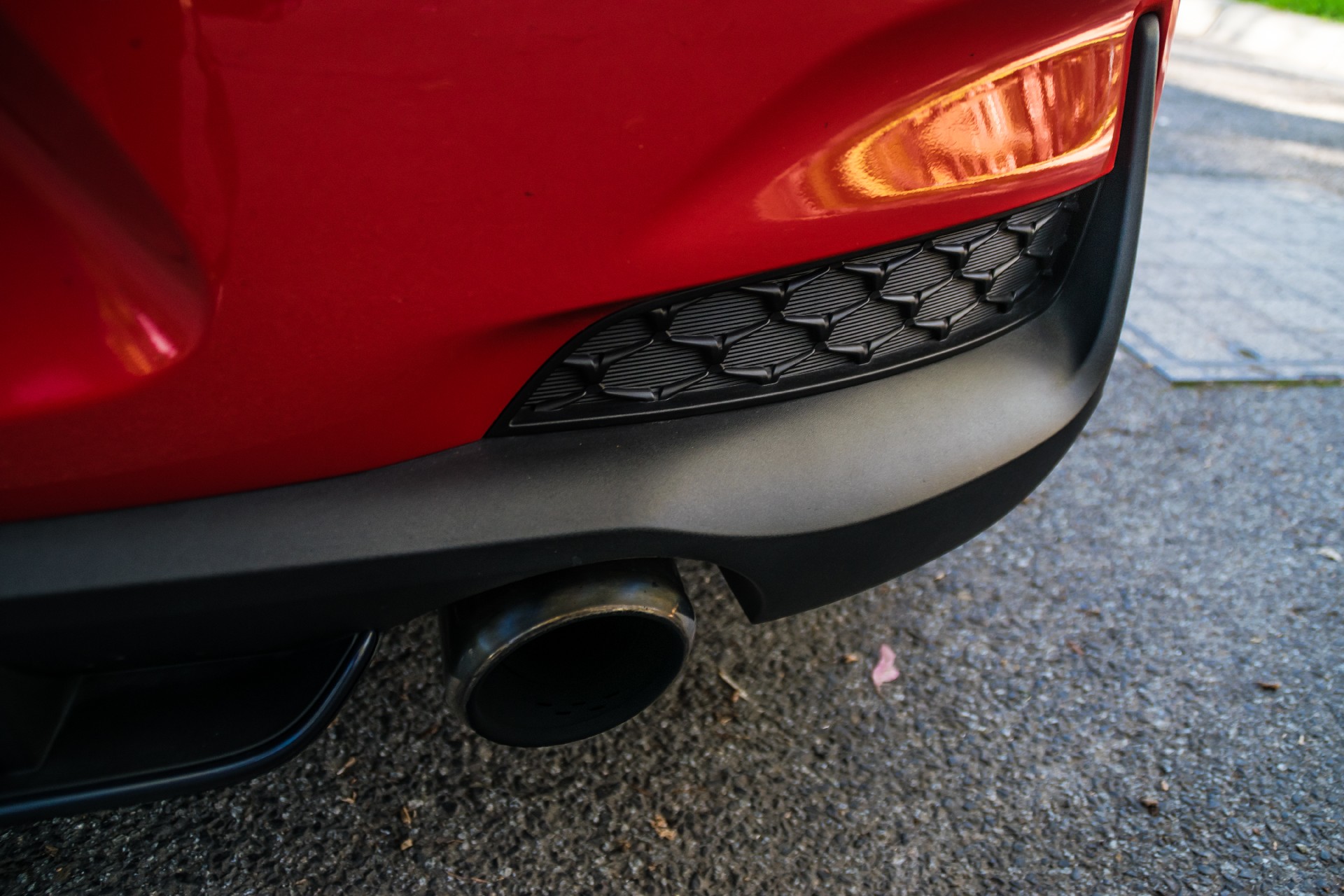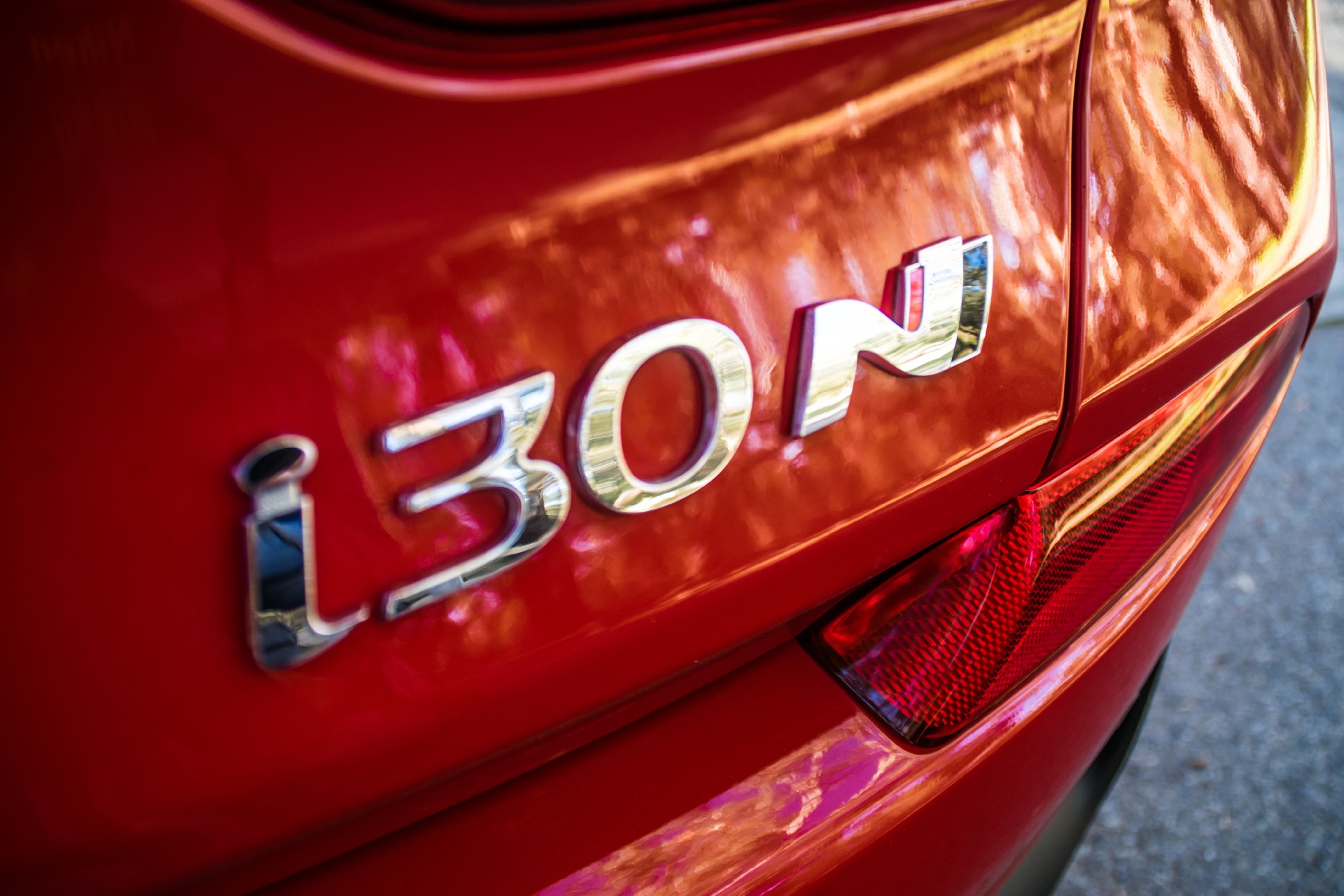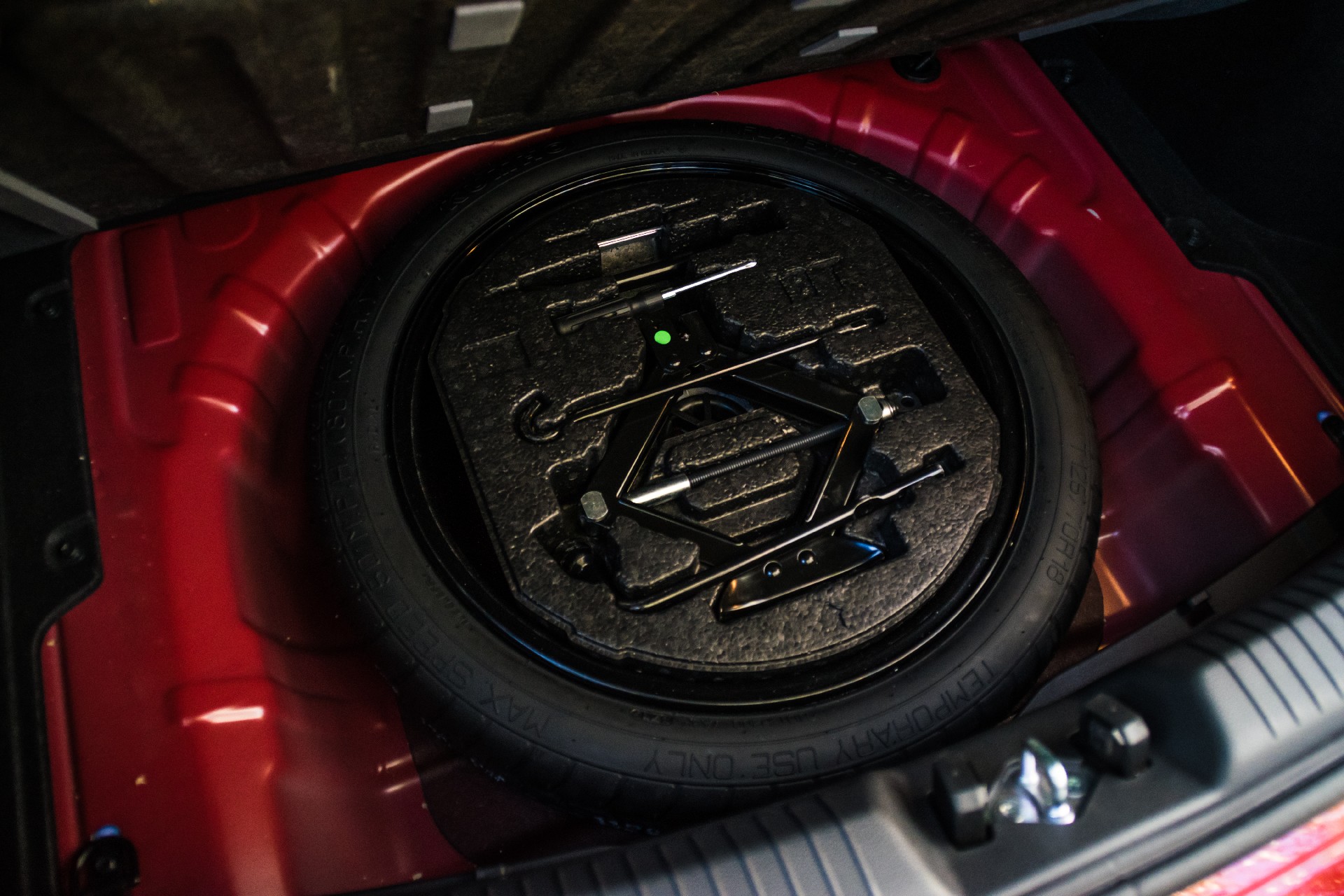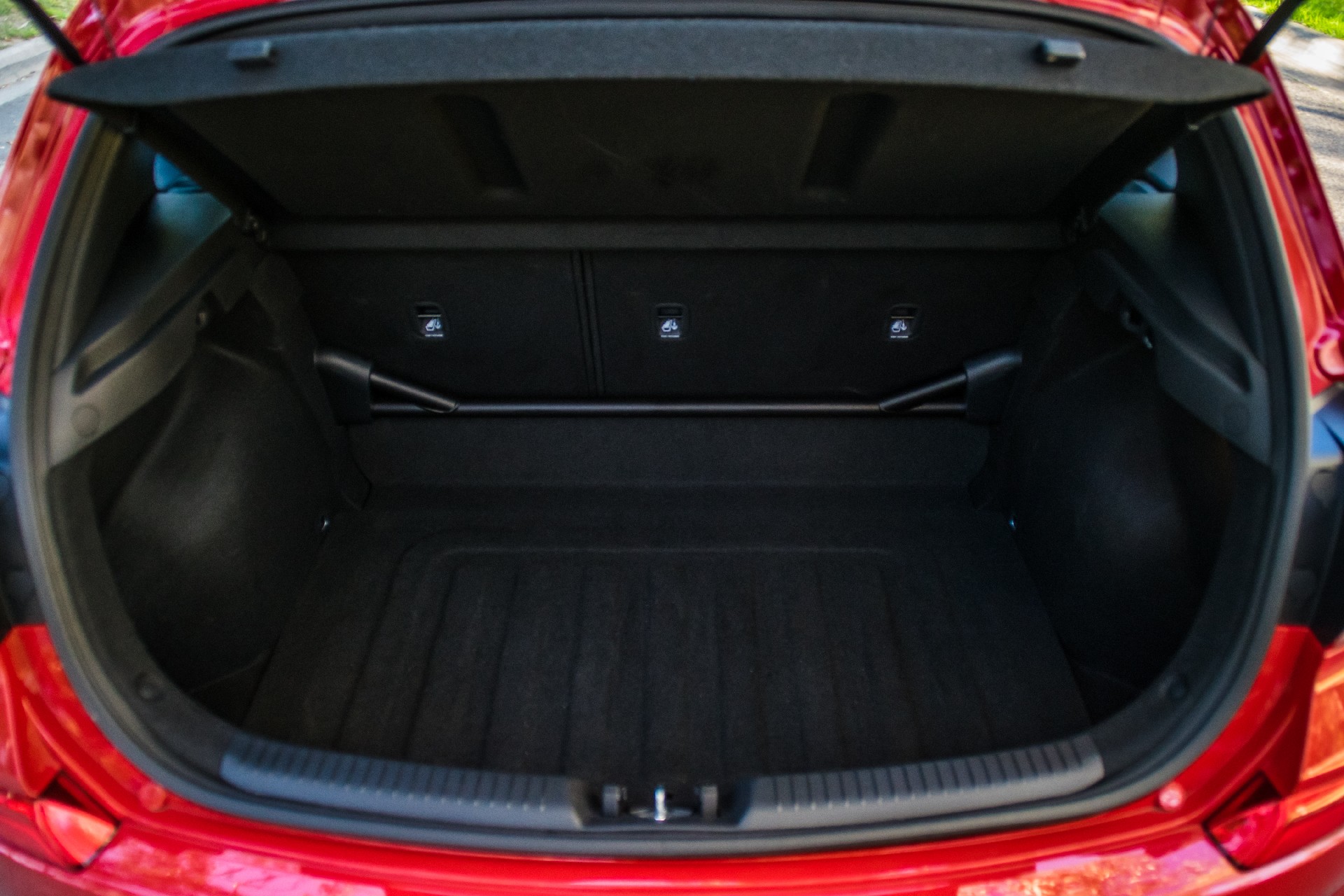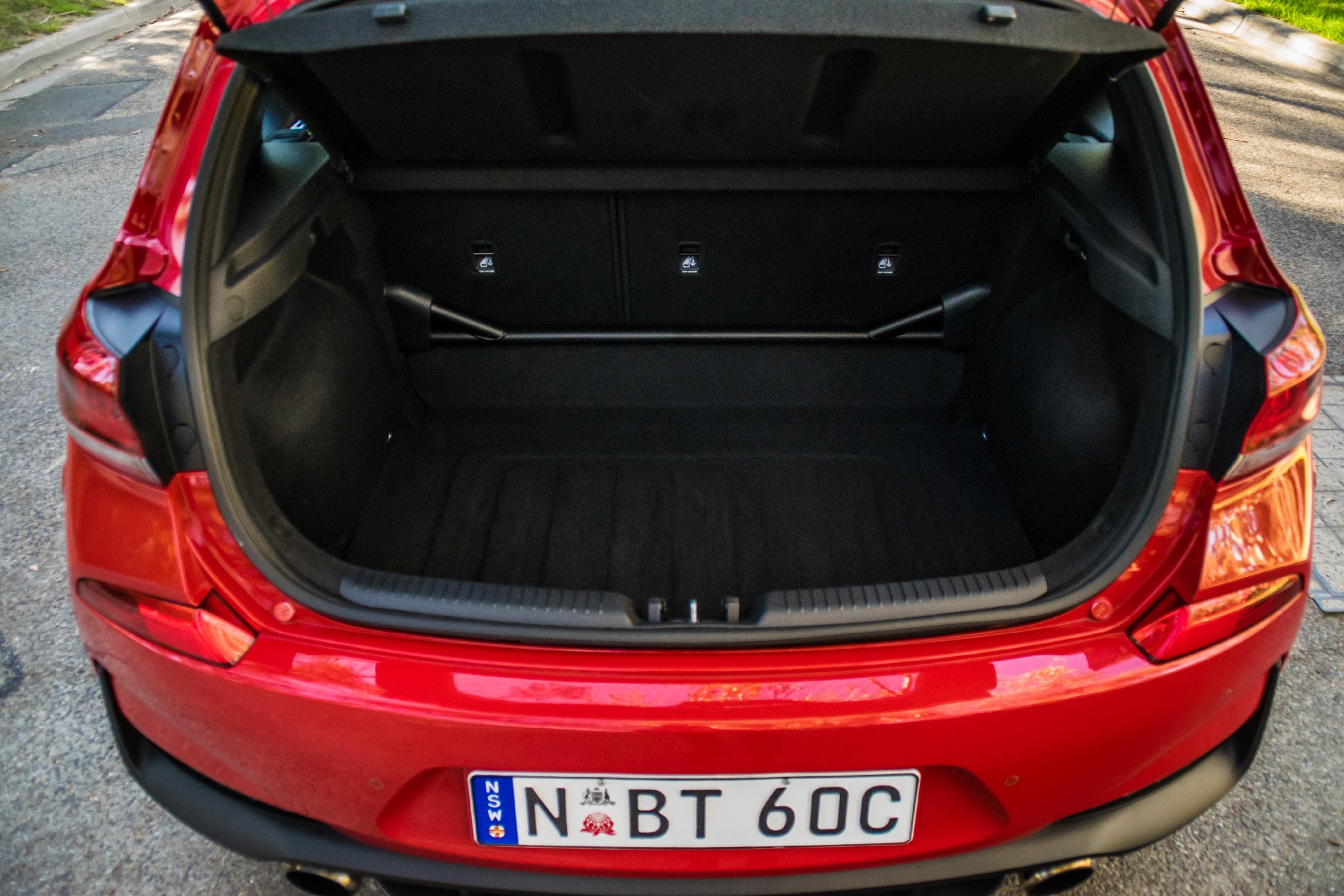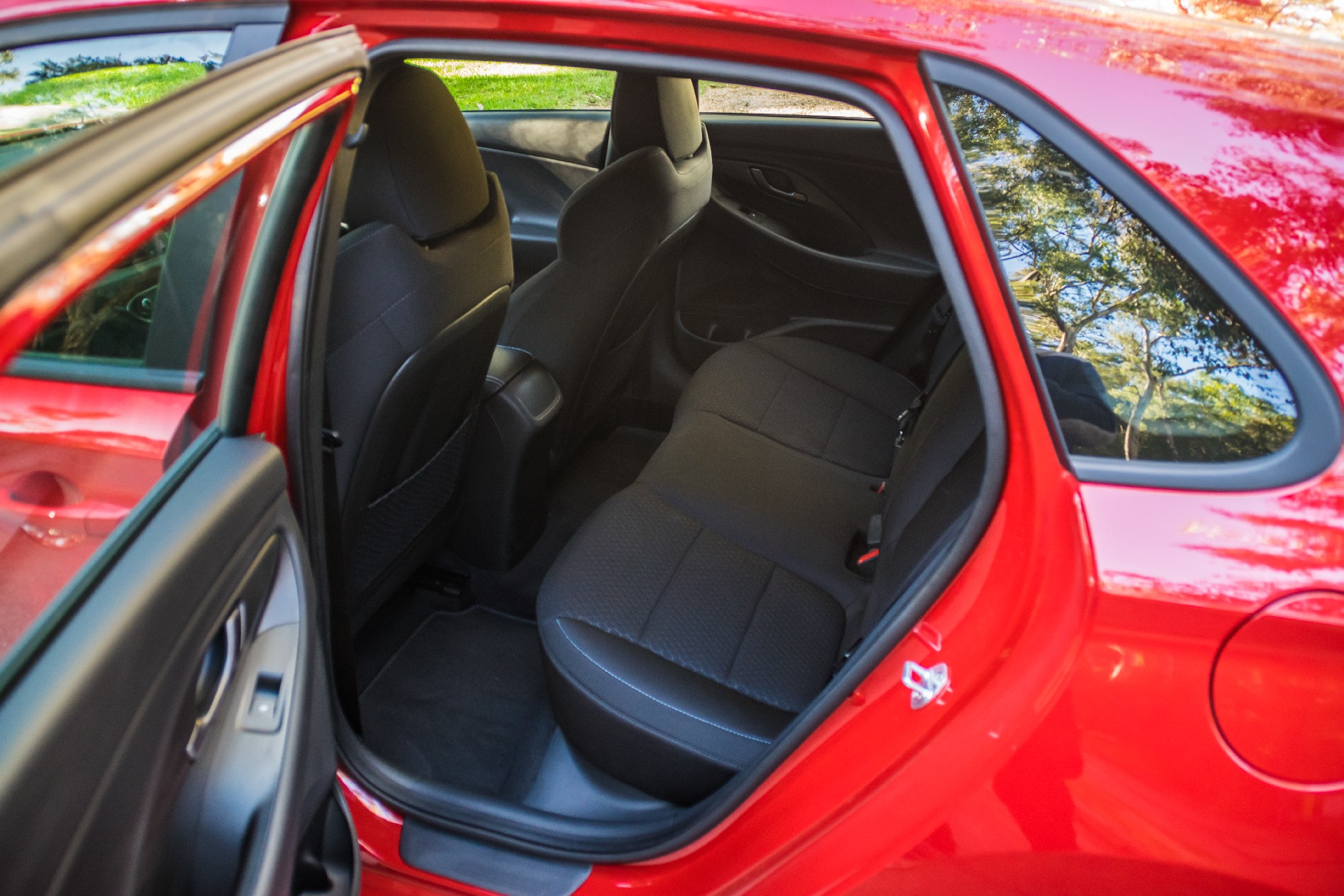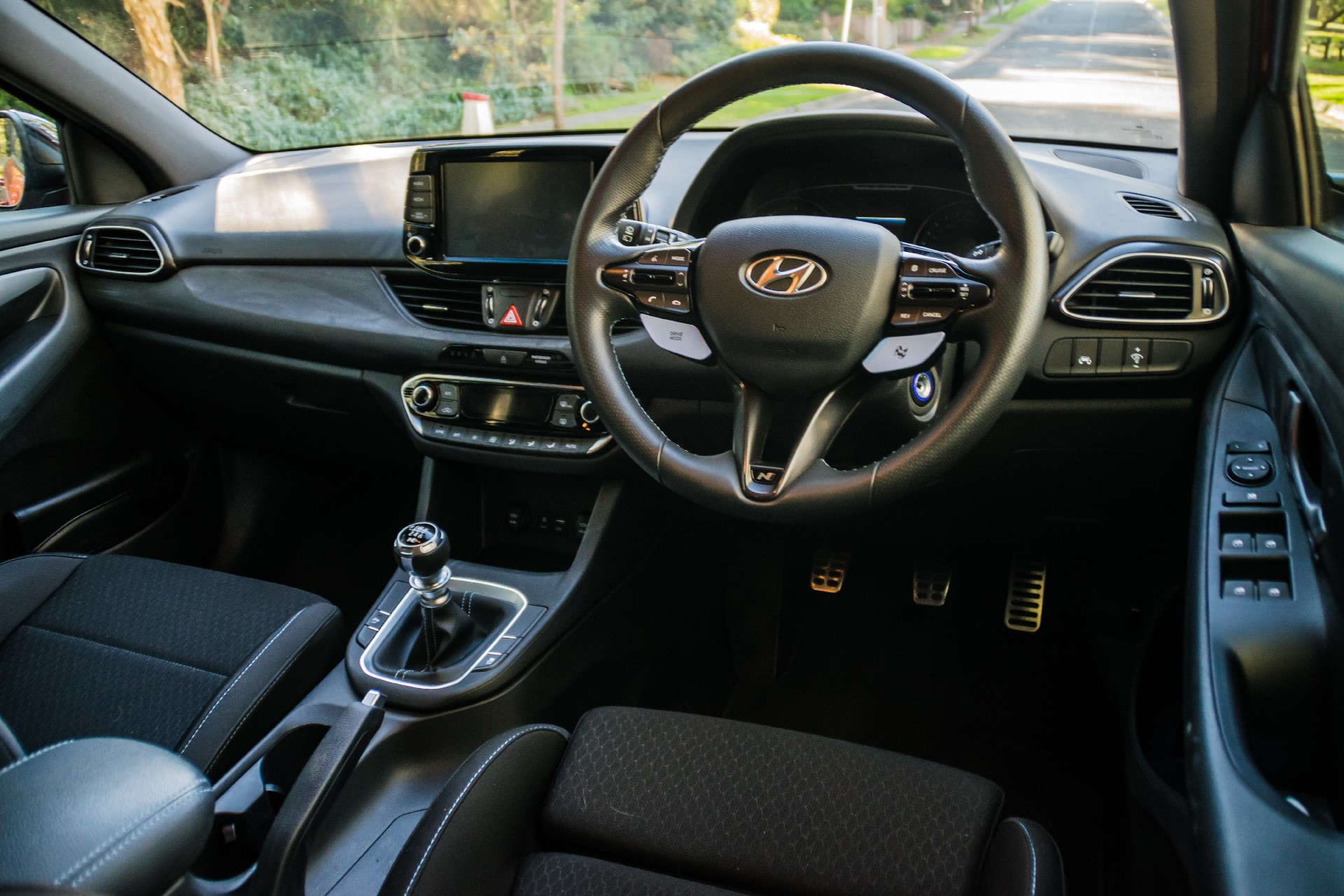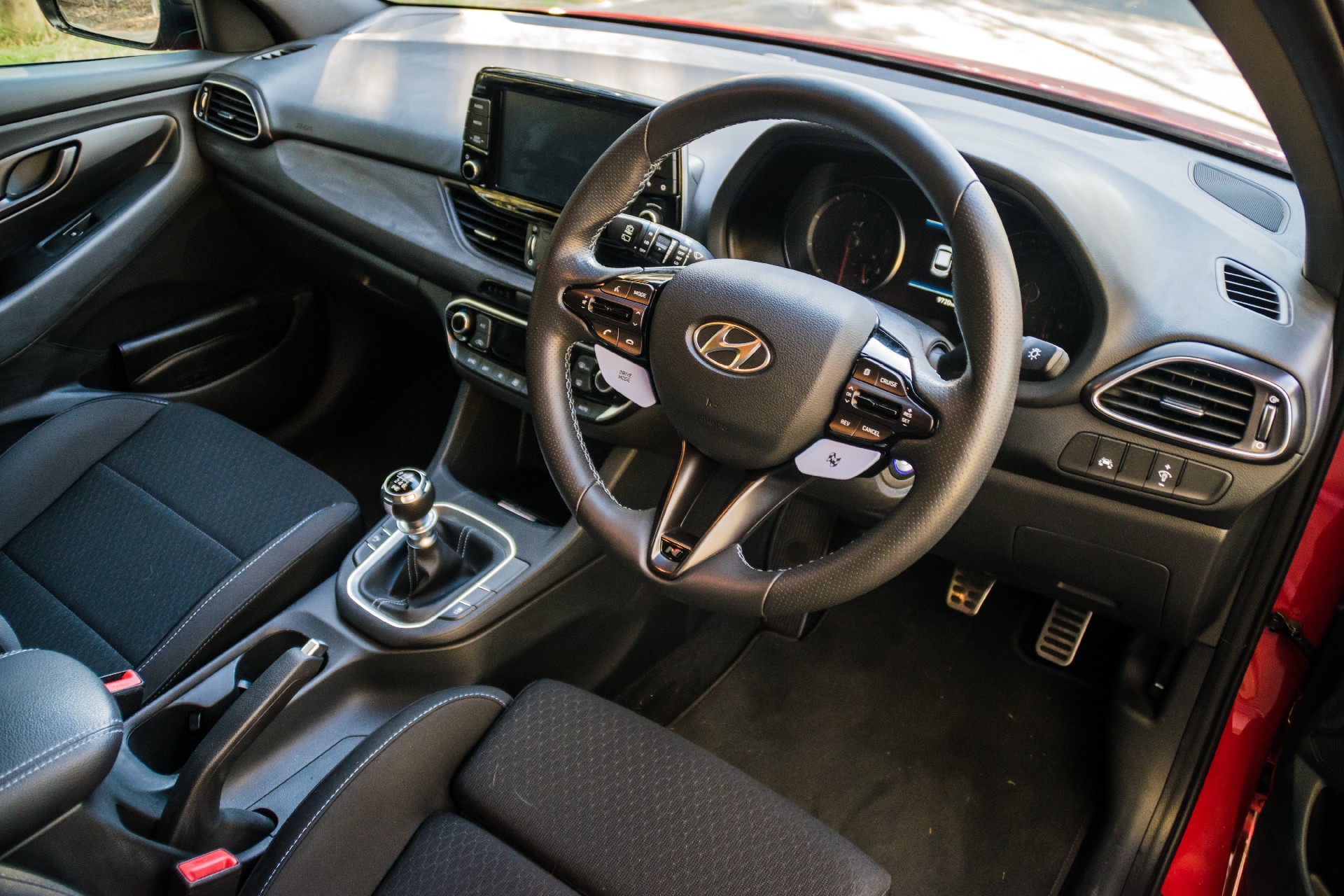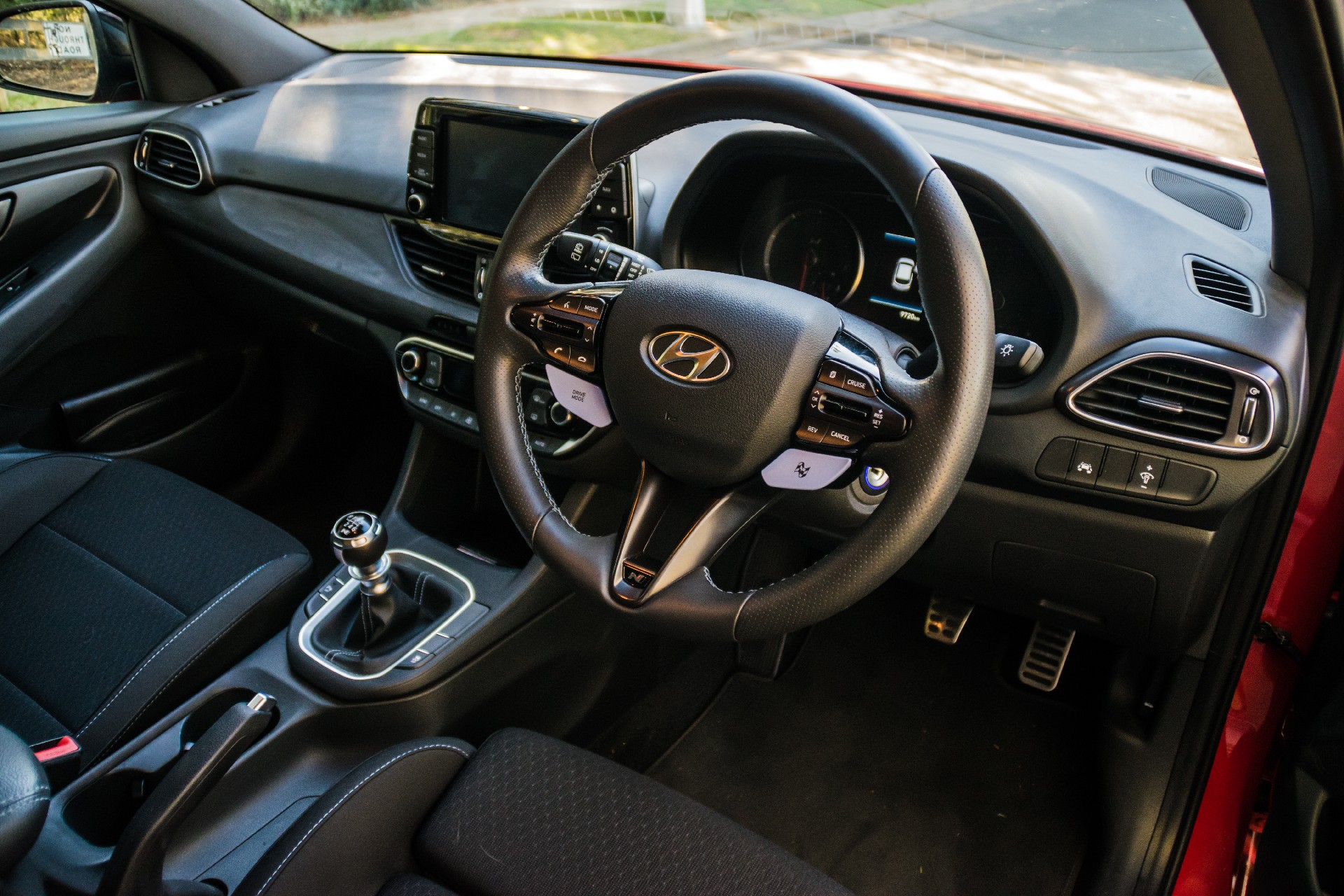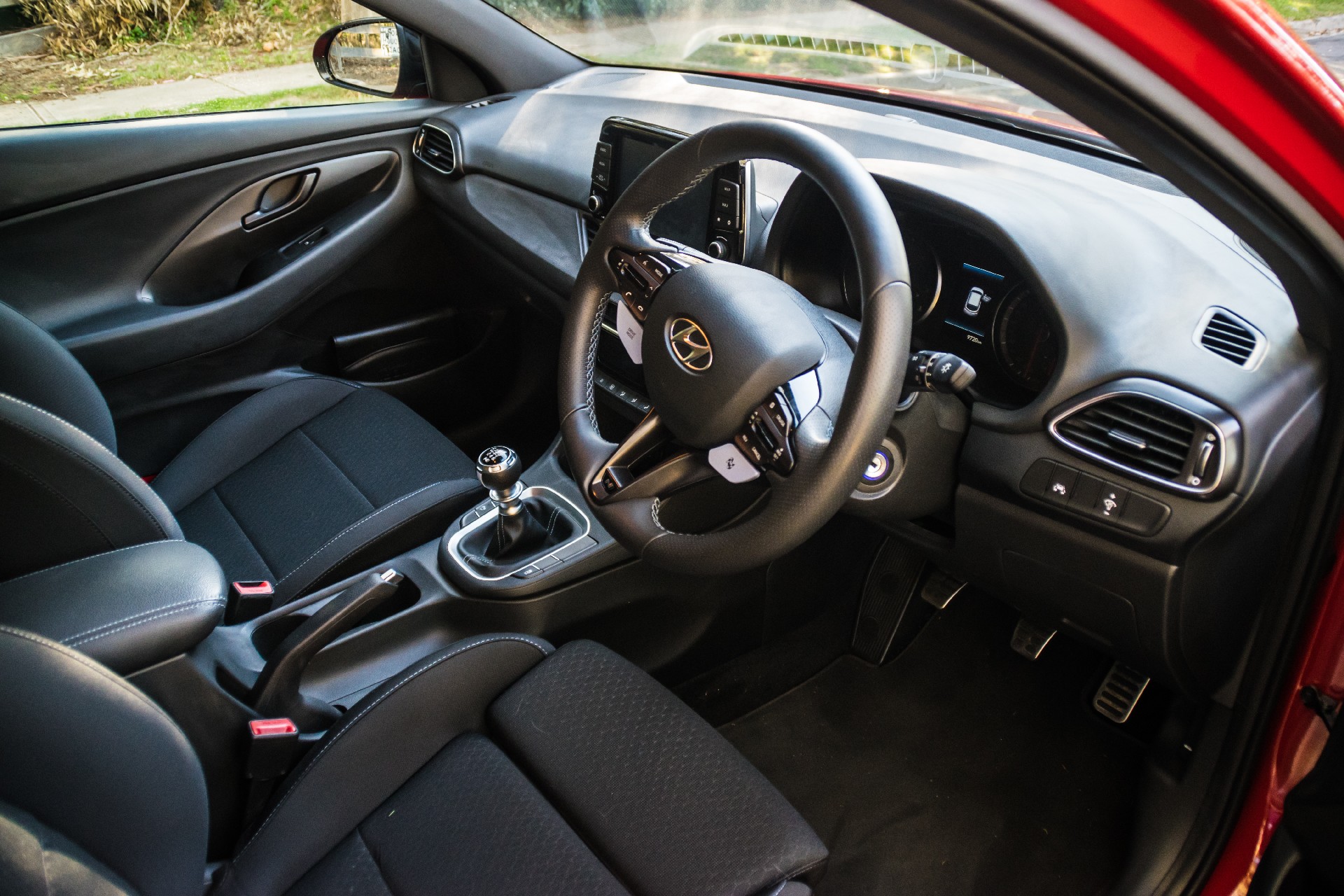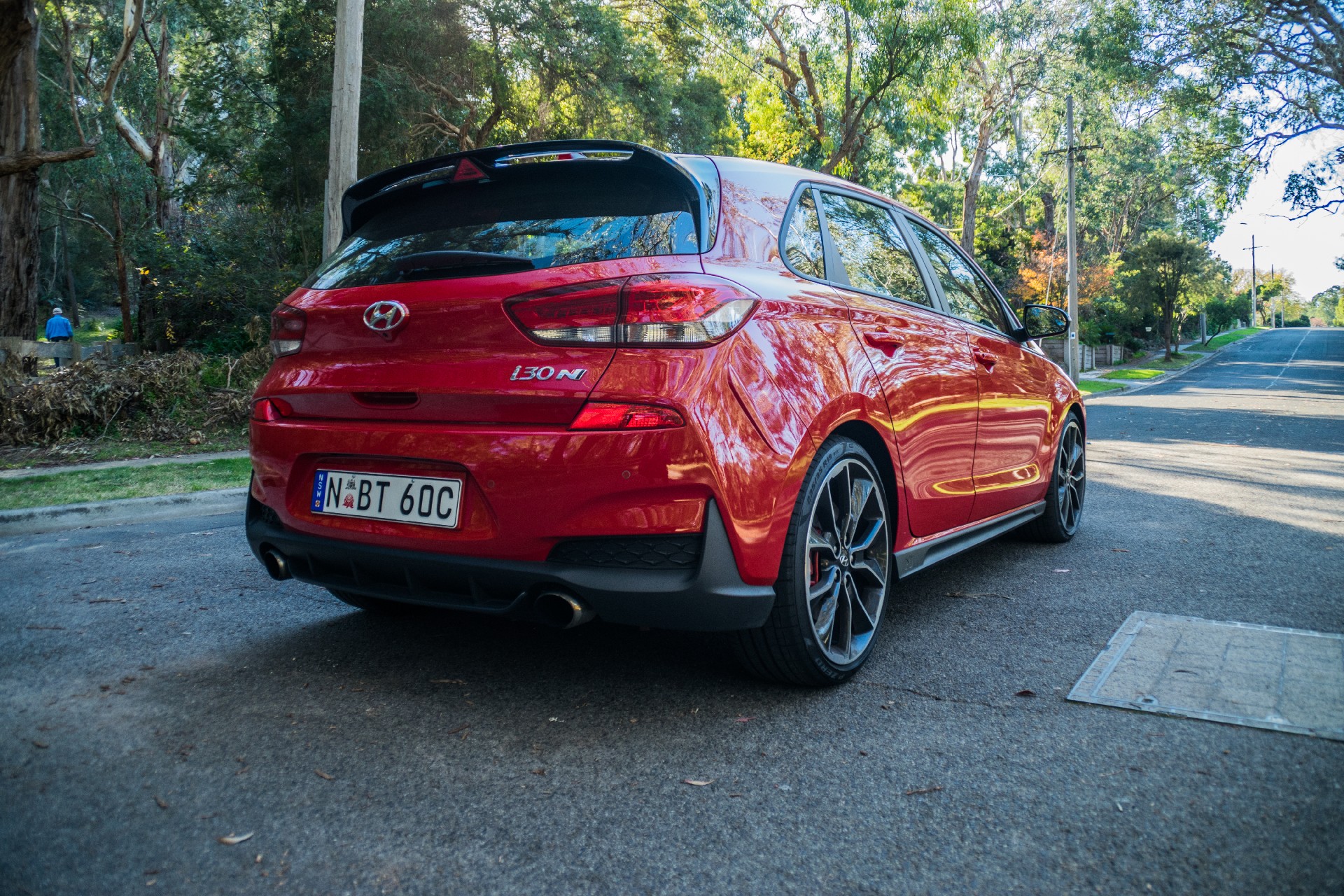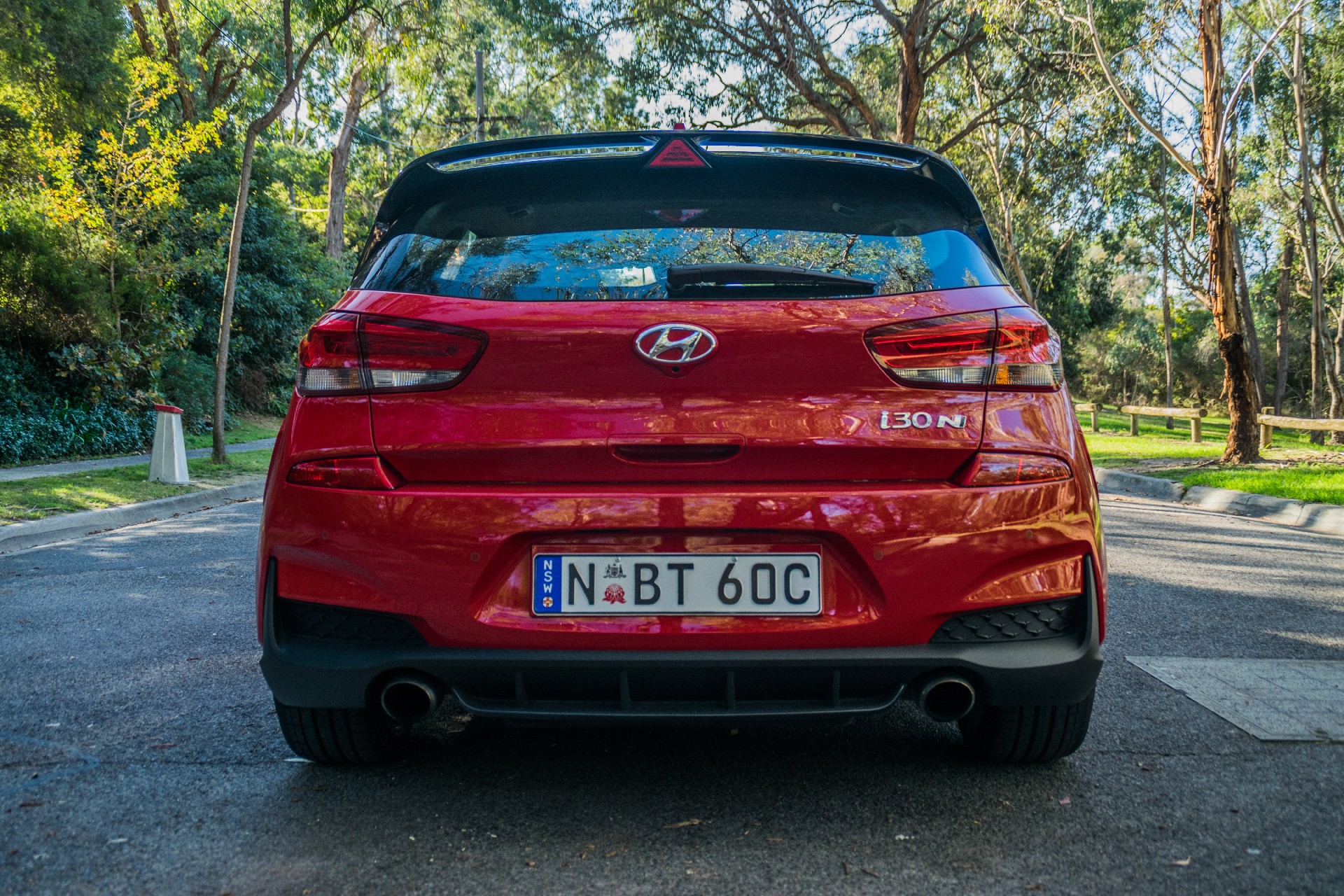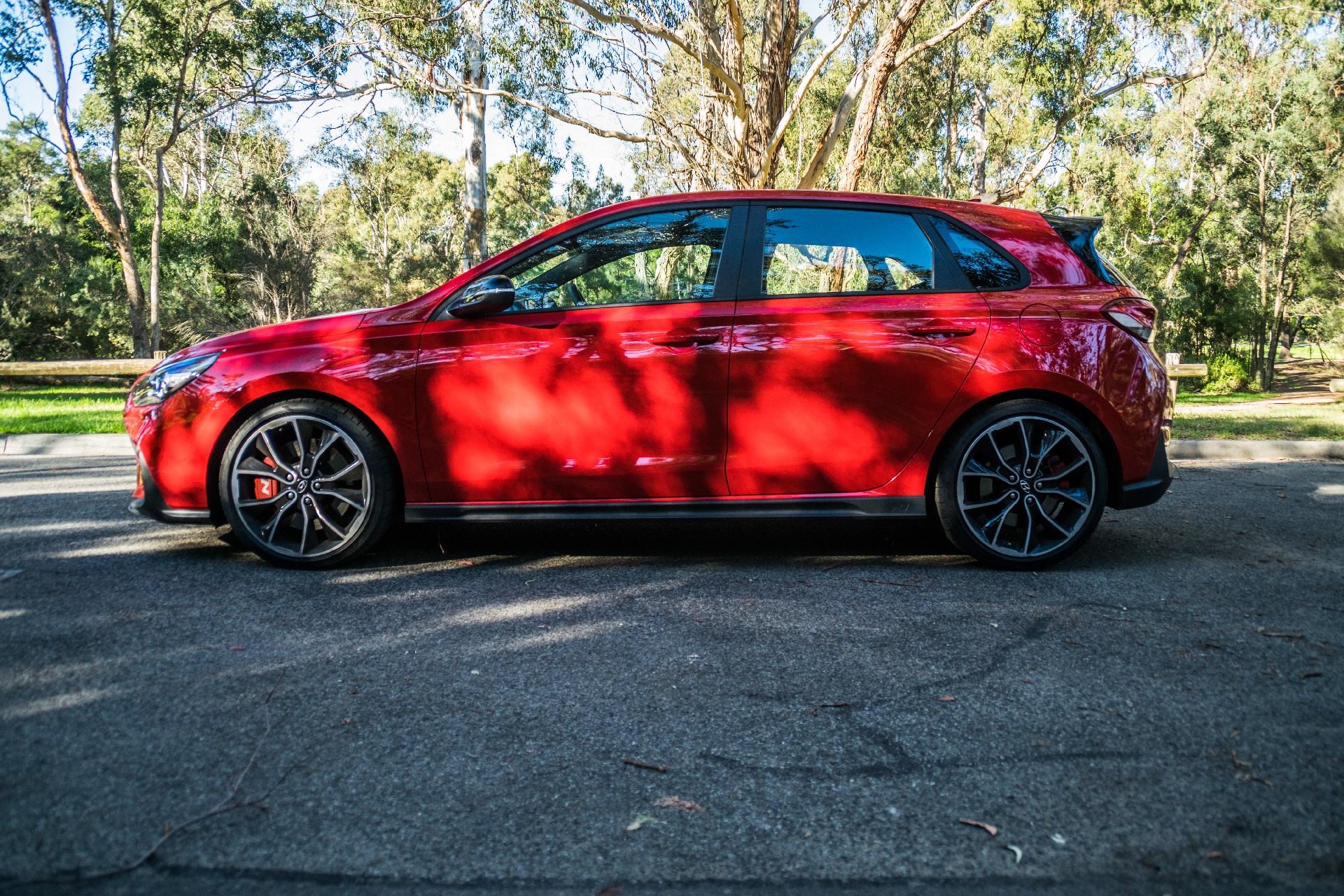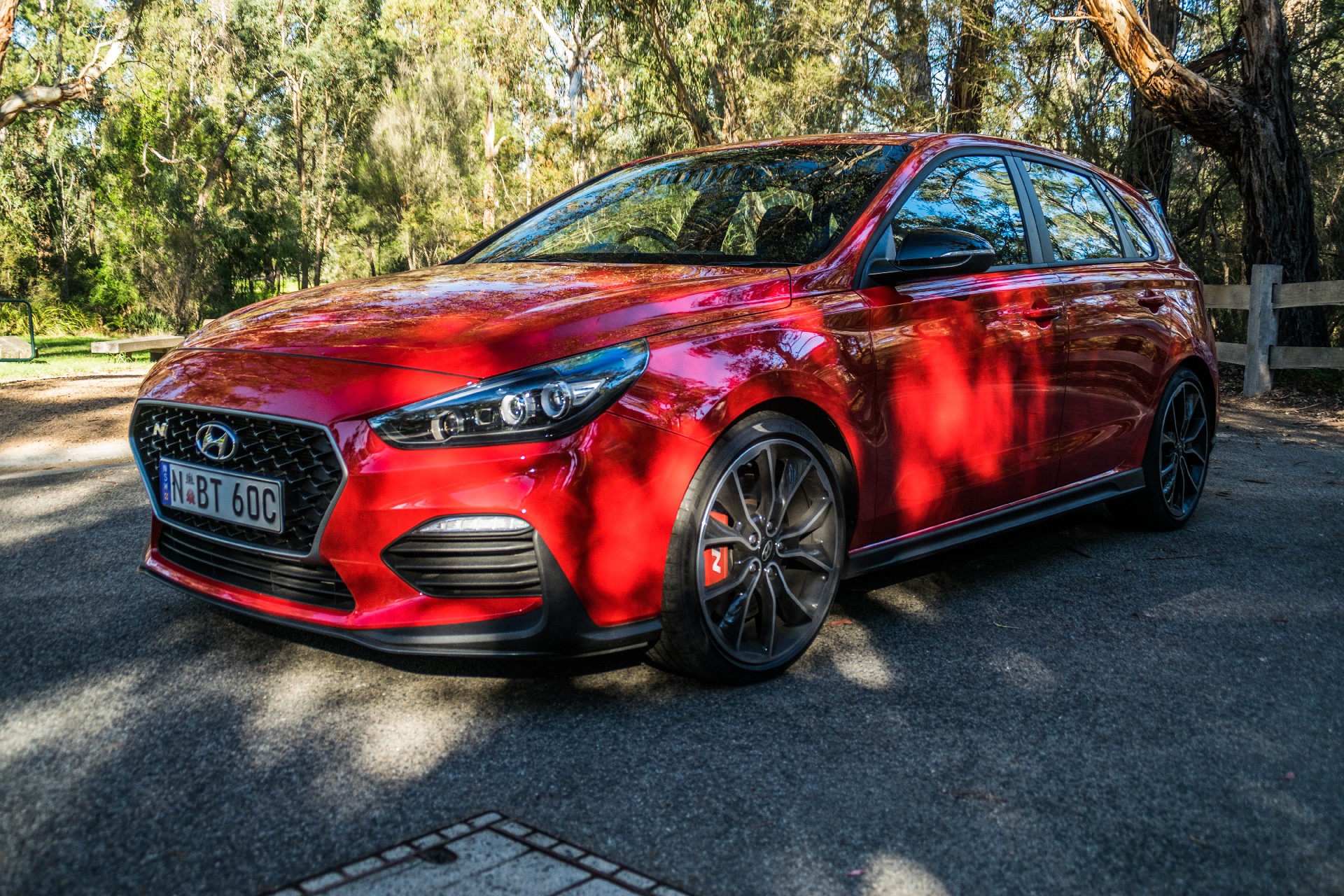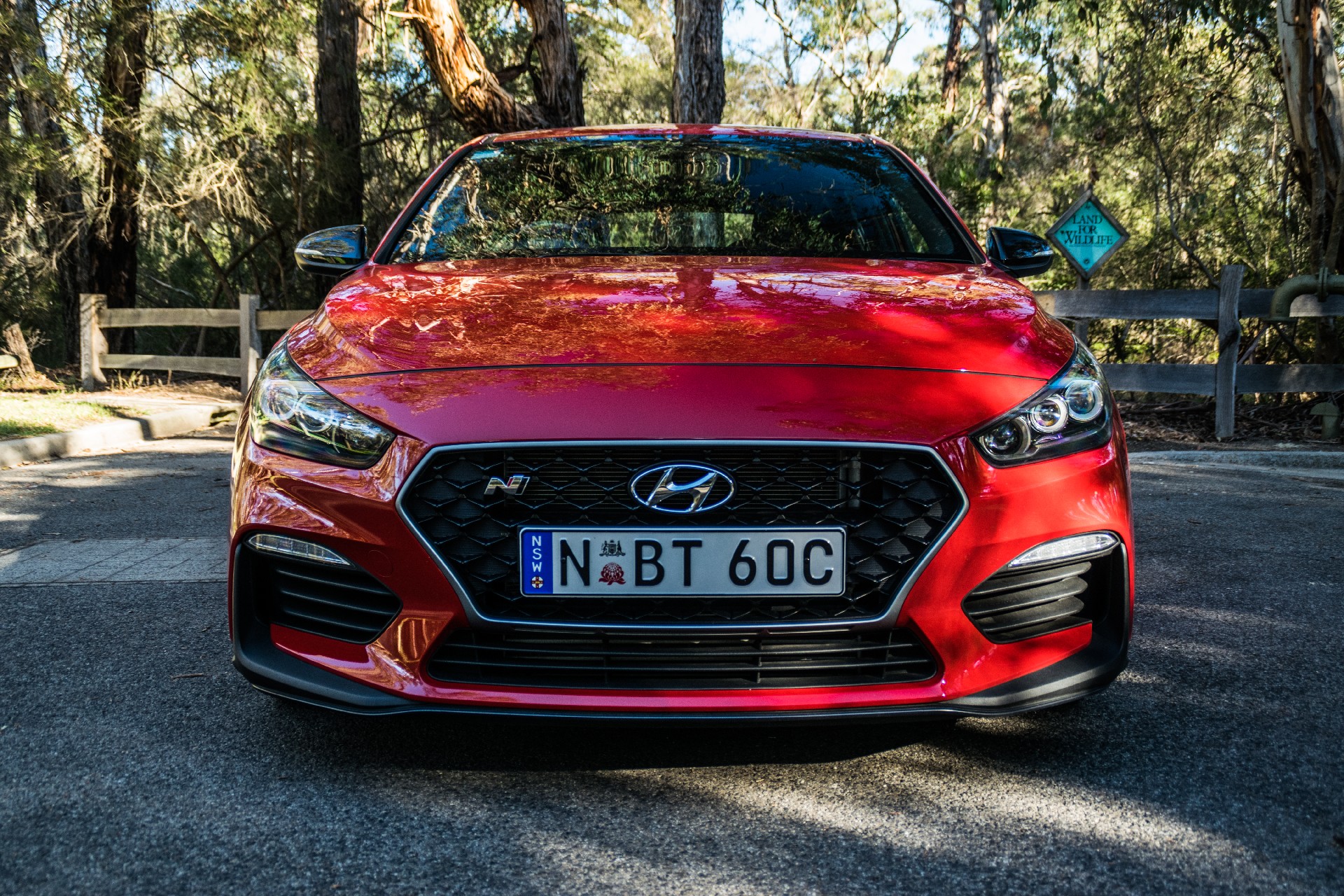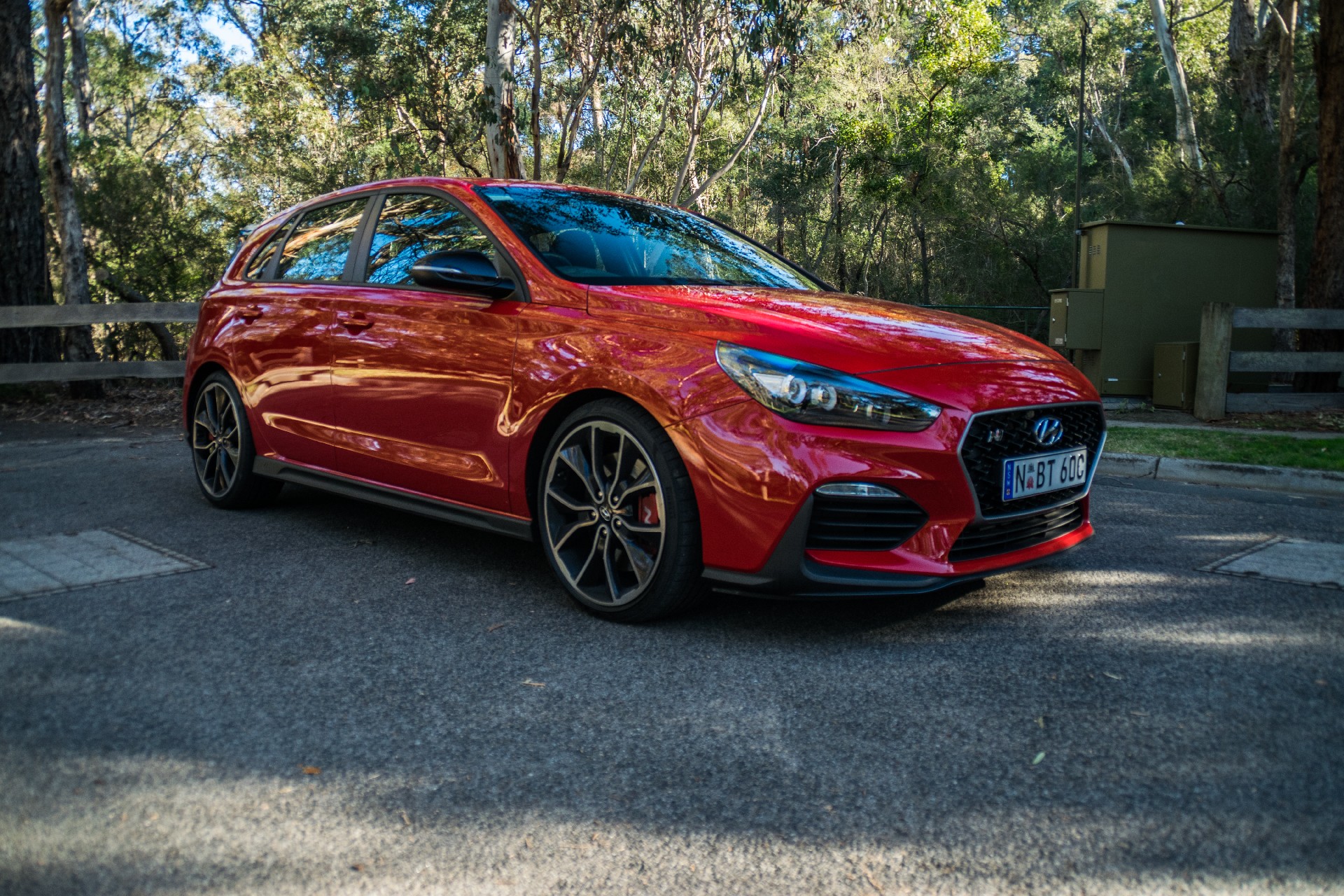It’s Tuesday. The sun rises on a cold, rainy, foggy and utterly miserable day. Yet, I am trying to find any excuse possible to drive the car currently sitting in my garage: a Hyundai i30 N. This thing is an addictive piece of machinery that just wants to be driven and enjoyed, no matter the conditions.
By now, you’ve probably read (or watched) the reviews heaping praise on the i30 N as the great new hot hatch on the market. It is meant to be one of the most capable front-wheel drive cars currently on sale, offering extraordinary driver involvement without requiring any sacrifices – and at an affordable price.
To find out if the i30 N really is worth all the praise, we jumped behind the wheel of one for a week.
Winning by numbers
On paper, the South Korean hatch certainly seems to have all the right ingredients to take the fight to the VW Golf GTI and even the more-expensive Honda Civic Type R. For starters, it is powered by a punchy 2.0-liter T-GDI turbocharged four which, depending on the market, is available in 183 kW (246 hp) (standard) and/or 202 kW (271 hp) (Performance) guise. In hot hatch-loving Australia, the i30 N is only sold in its most potent form.
Torque sits at a meaty 353 Nm (260 lb-ft) and rises to 378 Nm (278 lb-ft) on overboost. A six-speed manual transmission is the only option, but a dual-clutch is on its way and shall become available later this year. There may not be a gearbox for everyone at this stage, but the i30 N certainly has all the other features needed of a vehicle in the ever-competitive world of hot hatches.
Perhaps most important of all these features is an electronically controlled limited-slip differential. There is also electronically adjustable suspension, automatic rev matching, launch control, and five different drive modes in the N-Control system. Conveniently named Eco, Comfort, Sport, N, and N Custom, the first three are self-explanatory, but it is the other two where most of the fun happens.
Press the light blue race flag button on the steering wheel and you will enable N mode. This stiffens up the suspension, enables rev-matching, makes the steering heavier, sharpens the throttle response and puts the diff into its most aggressive mode – oh, and the exhaust pops and gurgles at every opportunity.
Then there is N Custom, where things get even better. This mode allows drivers to customize the engine, rev matching, limited slip diff, exhaust, suspension, steering, and ESC separately. Hyundai says there are 1,944 different possible configurations available through the system, and while some other hot hatches do offer custom driving modes like this, none are as comprehensive or offer as many options.
The i30 N comes as standard with 19-inch wheels shot with 235-mm wide Pirelli P-Zero rubber. There are also large 345 mm brake discs up front and, all up, the hatch tips the scales at 1429 kg (3150 lbs). Combined fuel economy sits at a claimed 8-liters per 100 km (29 U.S. mpg) but we averaged somewhere in the teens. That’s clearly reflective of our driving and not the car, however.
Inside, there’s nothing particularly special going on. The N’s interior is virtually identical to lesser i30 variants, save for a few buttons and sports seats which support you brilliantly.
I drove the N – and I liked it
Eager to see how the car would perform in all conditions, we drove it across all manner of paved road surfaces from highways to some of the finest driving roads you’re ever likely to find.
The first thing which immediately stands out when you get on the move is the engine. Figures of 271 HP (275 PS / 202 kW) and up to 378 Nm (278 lb-ft) are not to be sniffed at, especially for a vehicle which sends all of its power through the front wheels. Hit the throttle and the i30 N pins you back into your seat, accelerating at a rate few other front wheel drive cars can match. Officially, it can hit 100 km/h (62 mph) in 6.1 seconds, which is brisk but not neck-snapping. Where the car feels the fastest, though, is in-gear acceleration, especially in second and third. Thanks to the hefty amount of torque from the four-cylinder and the virtual lack of turbo lag, the car rockets forward at a surprising clip. There is some torque steer, as the clever setup and LSD can’t beat physics, but nothing to worry about.
Head out on the highway
Our first time driving the car involved a relatively lengthy highway run and provided the perfect opportunity to see how the i30 N performs over long distances. Sure, this may be a hot hatch capable of running around a racetrack all day, but at the end of the day it is a compact hatchback at the end that must be able to perform everyday duties as well.
Accelerate up to motorway speeds, slot the ‘box into sixth, enable the cruise control and it’s immediately apparent that the i30 N can do this all day. The equipment list includes a Lane Keeping Assist System that works extremely well but, like other systems in the market, does require you to keep your hands on the steering wheel. Or that’s the theory, as there were instances where I was able to lift my hands slightly off the wheel for periods of up to 30 seconds before the car “insisted” I got hold the steering wheel again.
The other thing that stands out while crushing the motorway miles is the ride. I rarely drove the i30 N in anything other than N Custom mode and always had the suspension set to ‘Normal,’ its most compliant setting. It’s a good thing Hyundai didn’t name this ‘Comfort’ because comfort isn’t the first thing which pops into your head. The ride is solid, but not harsh, and on smooth roads you will notice even the smallest bumps. This isn’t much of a surprise as this is a performance car, but it’s worth keeping in mind if you’re considering one. The car does not ride as smoothly as a regular i30 – nor did we expect it to. Should you so wish, you can select Sport or Sport+ for the suspension, but we found these two far too harsh to use on the street.
Nothing but a good time
Buckled up, I slide in the key, depress the clutch, and start up the car. Immediately, I press the N button on the wheel twice to engage N Custom mode and set up the car to my preference before a day of driving. This means the engine is in Sport+, rev-matching is Sport+, Sport is enabled for the e-LSD, and Sport+ is selected for the exhaust. The suspension and steering are best left in their respective Normal modes and I slot ESC into Sport+ to offer some turn-in and lift-off oversteer.
Hit the throttle, shift between second and third, and CRACK, I’m welcomed by a satisfying pop from the exhaust while shifting gears. With a corner approaching, I brake, slot the car back into second letting the rev-matching do its work and again, crackles come from the exhaust. Turn in. Wow. This is the first word that jumps into my head as I feel the grip on entry and mid-way through my first corner on a twisty piece of pavement. The traction this thing offers truly boggles the mind and try as I might, it was difficult to invoke any kind of understeer. Hell, through some corners, you can pin the throttle and let the e-LSD do its thing and come out at the other end without getting any understeer. You’re more likely to have some oversteer on corner exit, in fact.
Then comes the brakes. Oh the brakes. These things feel like they can do anything and never show even the slightest hint of fade. The pedal remains solid no matter how much you use (and abuse) them.
There are three main aspects of the driving experience which really dominate the experience: the exhaust, the grip, and the mid-range torque. The exhaust is perhaps the highlight. Whenever you hit the gas and left off, in virtually any gear, the car will crackle and pop in a manner unlike other front-wheel drive hot hatches. From the cabin, the sounds coming from the rear fills the air and will leave you giggling. It is addictive. I found myself trying to get the vehicle to pop and snarl at every possible moment.
Fell in love with a Hyundai
The Hyundai i30 N is a car which wants to be driven. It’s more than capable of fitting four passengers and luggage but really shines when you can extract the most out if its stunning drivetrain and try to take it to its limits. If you do, you’ll be rewarded with composure, excitement, and leave with a smile from ear to ear. This is one of the most enjoyable cars I’ve driven in a long, long time.
What is particularly exciting about the i30 N is that it is just the start. Hyundai is working on an all-wheel drive variant and one with a dual-clutch. We wouldn’t be surprised to see the carmaker drastically increase power for future range-topping models to rival the likes of the VW Golf R and Ford Focus RS.
Australian pricing for the hatch starts at $39,990 ($27,772 USD) excluding on-road costs. The closest buyers in the U.S. can get to the i30 N is the Veloster N priced from $27,785. Money very well spent, if you ask us.







